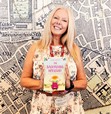Janice Horton's Blog, page 15
April 7, 2021
PACKING LIST FOR SCOTLAND
Under normal circumstances, every year millions of visitors from all over the world flock to Scotland. Tourists come to Scotland enjoy the natural beauty and the breath-taking and dramatic Scottish landscapes, the centuries-old history, the ancient heritage and, of course, to experience the amazing food and the drink that is inherently part of Scottish culture.
What to pack and what to wear in Scotland? Yet, many of those visitors who come to experience all that Scotland has to offer must wonder what exactly they should pack in their suitcase or backpacks for a destination where outdoor activities might include shopping and sightseeing but also wild camping and wandering around castles, hiking through heather and glens and trekking around lochs, climbing mountains and bagging monroes – when the weather is so notoriously unpredictable!
IMPORTANT: Please check Scottish Government Guidance before travelling.
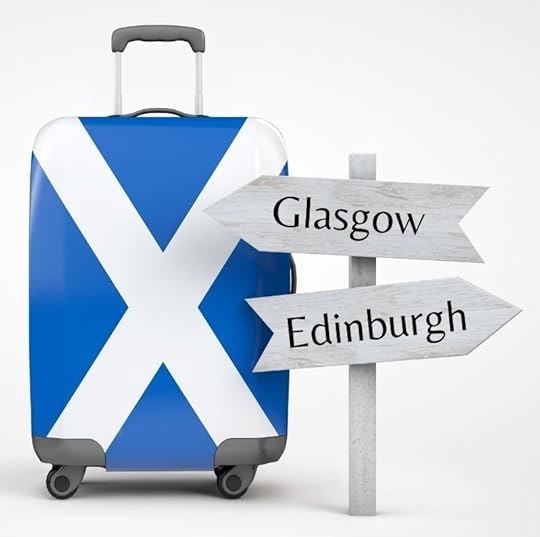 QUOTES ABOUT THE WEATHER IN SCOTLAND
QUOTES ABOUT THE WEATHER IN SCOTLAND“In Scotland, there is no such thing as bad weather, only the wrong clothes.” Billy Connelly
“If you don’t like the Scottish weather, wait 30 minutes, and it’s likely to change.” Raymond Bonner
“Today’s rain is tomorrows whisky!” Scottish Proverb
“It’s fine weather we’re having. The rain is falling straight down and kind of to the side.…” William Wallace (In Braveheart)
“In Scotland, beautiful as it is, it was always raining. Even when it wasn’t raining, it was about to rain, or had just rained.” Colin Hay. Actor
“I love summer in Scotland. It’s my favourite day of the year.” Unknown
“There are two seasons in Scotland: June and winter.” Billy Connelly
TO EXPLAIN THE WEATHER IN SCOTLAND
Scotland is usually wetter and cooler than England because of the hilly terrain and the low-pressure systems coming in from the North Atlantic current. The prevailing winds are generally from the west and southwest.
The high latitude of Scotland means that in the winter the days are very short and in summer the opposite is true and the days are very long. On the longest day (21st June) there’s no complete darkness in the northerly parts of Scotland.
Many Scots will promise you that you’ll experience “all four seasons in one day.”
January and February are the coldest months in Scotland with snow falling on high ground. July and August are normally the warmest months but don’t get too excited because temperatures are an average of 19 degrees Celsius.
The rainfall in Scotland varies extensively from an average of 3000mm per year in the western Highlands to under 800mm per year near the east coast. The wettest parts of Scotland will experience an average of 250 days of rain per year, whereas the driest parts only experience an average of about 150 days of rain per year.
Did you know there are over 100 words for weather in Scotland?!These include my favourites: Dreich. Dour. Pure Baltic. Snell. Flaggie. Hailing Bullet Stanes. Droolkit. Haar. Oorlich. Stoatin’. Smirr. Gloaming.
WHEN IS THE BEST TIME TO VISIT SCOTLAND?In my experience, having lived in Scotland for most of my adult life, I would certainly recommend Springtime (April and May) or Autumn (September and October) to you as a ‘best time’ to visit Scotland.
Springtime in Scotland is often still cold (average temps 7 – 13 deg C) and there is still the threat of snow on the hills. Right now, I’m in Scotland while writing this post and its April. Yesterday I was out walking in the cold but dry bright Scottish sunshine.
Today it is snowing heavily and that snow is coming down sideways in the wind.
But, not to worry, as I’m cosy indoors and have a log fire roaring in the grate and this afternoon could well be dry and bright and sunny again!
“N’er cast a clout until May is oot…” are wise words which means don’t ever take off any layers of winter clothing until the end of May!
But in springtime, with the one-hour switch over to British Summer Time, the days do feel longer and the weather can be brighter. In my experience, it can often be drier in springtime than in the summertime when Scottish skies can be heavy and leaden grey.
In summertime, if the weather is dreich (damp and grey) then you’ll also have to be prepared to deal with the dreaded ‘wee beasties’ or infamous Scottish midge – the biting flies that plague both locals and tourists alike from late May to late September.
There are over 35 different species of biting midge in Scotland and generally, the more northerly you go, then the worse the midge problem and the more ferocious the biting midge. For the unprepared, visiting the Scottish Highlands in Summer can be torturous. You have been warned!
The Midge ForecastVisitors to Scotland during the summer months can check the Scottish Midge Forecast – yes, there really is such a thing – which will tell you how severe midges are likely to be on a given day in a particular location and offer advice on how to thwart the wee biting beasties.
I have also written a post on how to prevent biting flies such as midges, sandflies – the no see ‘ums – and mosquitoes etc from spoiling your holiday you that might find helpful.
Autumn in Scotland, like springtime in Scotland, is a ‘shoulder season’ that can often offer spells of drier weather and milder temperatures (average 8 – 14 deg C) together with off-peak accommodation costs and fewer crowds than in the summertime in the most popular tourist spots in Scotland – like taking a tour of Edinburgh Castle.
Of course, many people want to come to Scotland in the summer months (average temps 15 – 17 deg C but of course it can sometimes be much warmer) because that’s when the wonderful Edinburgh Festivals will normally take place.
August is when the Edinburgh Fringe and Edinburgh International Festival and The Edinburgh Military Tattoo at Edinburgh Castle happens.
There are actually eleven festivals hosted in Edinburgh each year, the ones I’ve already mentioned plus the Edinburgh Science Festival, Edinburgh International Children’s Festival, Edinburgh International Film Festival, Edinburgh Jazz & Blues Festival, Edinburgh Art Festival, Edinburgh International Book Festival, Edinburgh International Storytelling Festival and lastly, Edinburgh’s Hogmanay.
WHAT TO PACK FOR SCOTLAND IN ALL SEASONS?So… with all these activities on throughout the year and in all seasons… what do you wear and what do you pack for a holiday in Scotland?

My recommendation for all seasons in Scotland is layers of clothes. Vest tops. Long-sleeved tops. Short-sleeved tops. A cotton shirt. A woollen sweater. Leggings. Jeans. Quick-dry cotton trousers are a good idea and also waterproof trousers for when the weather is oorlich (damp and freezing). You’ll definitely need a raincoat so that you don’t get droolkit (soaked to the bone) and you might want to keep your phone in a waterproof phone case. A warm hat is a good idea but don’t buy one of those awful tacky tartan tourist ‘Jimmy’ hats with nylon red hair attached to it. You’ll also need good comfortable waterproof trainers and/or shoes or boots.
But don’t stress. If you own any of the items mentioned already then why not bring them with you in your luggage and then buy all the other things – like warm woollen sweaters – when you arrive in Scotland?
Scotland is famous for its traditional wool and luxury cashmere knitwear using Arran and Hebridean Wool, Harris Tweed, and Tartan and Fair Isle patterns, to name a few.
On Your Packing List For Scotland… you’ll also need:TRAVEL INSURANCE
Click HERE Read my Blog Post about Travel Insurance
 WHAT TO PACK FOR SCOTLAND IN SPRING
WHAT TO PACK FOR SCOTLAND IN SPRING(March: April: May)

Springtime in Scotland is often bright and breezy. It can also be wet and windy which can make it feel icy cold (pure Baltic) both in the city streets or the open countryside.
So, wear layers of clothing and lightweight woollies under your rain jacket and insulate against the biting winds with a warm scarf and hat and gloves and use a wind-resistant umbrella. Carry all your stuff around in a waterproof daypack.
Wearing (waterproof) boots and woolly tights/leggings and thermal underwear is also recommended if you are planning to be outdoors a lot or exploring high ground.
For hiking or even looking around castles, lightweight waterproof over-trousers on top of your leggings or jeans and a fleecy sweatshirt or a woollen sweater and a padded body warmer are all ideal as outerwear and also casual attire too.
In springtime, several warm but lighter layers are better than one big heavy sweater, so that you can layer up and adjust as necessary between the sunny spells and rain showers.
WHAT TO PACK FOR SCOTLAND IN SUMMER(June: July: August)

Again, lightweight layers should be the main items on your Scotland In Summer packing list. Scotland in summer can be warm and sunny and dry on one day and everyone will be out wearing sunglasses and shorts and t-shirts. And then the next day, you might need your jeans/trousers and a cardigan/sweater and carry a rain jacket again.
If the forecast is dry, then late summer evenings in Scotland can still be chilly, so be prepared and wear or carry a long-sleeved fleecy top. Carry your wind-resistant umbrella just in case it rains in your day bag and don’t forget your midge repellent!
WHAT TO PACK FOR SCOTLAND IN AUTUMN(September: October: November)
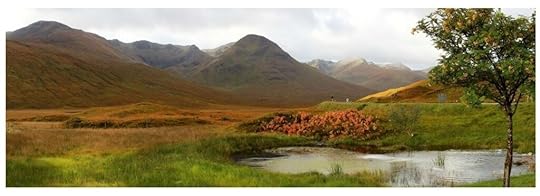
The weather during September and into October in Scotland can be surprisingly pleasant but also unpredictable. This can make your packing list for Scotland In Autumn a bit tricky.
I’d recommend the same items that I have suggested for springtime – light layers – but also add a warmer and more insulated padded raincoat with a hood. Team the coast with gloves and a moisture wicking scarf to keep out any chilly draughts.
Pay attention to what footwear you are wearing at this time of year too. No one likes cold wet feet and so waterproof trainers or boots and warm socks are recommended.
WHAT TO PACK FOR SCOTLAND IN WINTER(December: January: February)

Visiting Scotland in winter is to experience various degrees of cold weather with very few hours of daylight. During December and January, due to Scotland’s latitude, there are only four or five hours of daylight at best depending on the levels of cloud cover and the further north you go then the less daylight you’ll have – if any – at all.
Yet, winter in Scotland can be magical. Outside there are snowy landscapes, winter sports, brisk walks. Inside, warm fires, friendly people, hearty food… and a dram of whisky!
Then there are the Hogmanay celebrations that bring people to Scotland in wintertime from all over the world. Especially for the famous Princes Street Hogmanay Party in Edinburgh. But what to wear? What should be on your Scotland In Winter packing list?
Bring warm layers and also thermal underwear. Cosy, woollen, fleecy thicker top clothes to keep you warm. You’ll need a longer length warm and waterproof coat. A wool scarf – I like a blanket scarf – and of course gloves and a warm hat.
Footwear should be sturdy with warm linings. Boots are a good idea. Wear your footwear with warm soft wool socks. Footwear that isn’t sturdy or warm should be reserved for indoors only but avoid too-high-heels in case you are suddenly whisked to your feet for a quick reel of ‘Dashing White Sargent’ or ‘Gay Gordons’ at an impromptu Ceilidh Scottish dance!
So that’s my list of recommendations for what to pack and what to wear in Scotland.I’m sure it will be helpful to you.
Do have a wonderful time in Bonny Scotland and then Haste Ye Back!

 For Further Information and Resources:
For Further Information and Resources:Before you travel, please check the latest Scottish Government guidance
Follow Historic Environment Scotland
Visit Visit Scotland
Go to Scotland.org
Also The Scottish Tourism Alliance
Why buy travel insurance from World Nomads.com?Backed by specialist insurers and global assistance partnersBuy Online, even if you’ve already left homeBuy more cover and claim online while travellingCovers a range of adventure sports and activitiesGive a little back and support a community development projectAll of the information provided about travel insurance is a brief summary only. It does not include all terms, conditions, limitations, exclusions and termination provisions of the travel insurance plans described. Coverage may not be available for residents of all countries, states or provinces. Please carefully read your policy wording for a full description of coverage.
The post PACKING LIST FOR SCOTLAND appeared first on The Backpacking Housewife.
March 30, 2021
TRAVEL PLANNING: Travel Insurance for Over 50s

Buying a travel insurance policy to cover you for any unforeseen medical expenses or financial losses while travelling is an essential part of the planning and preparation for any trip. Finding the best travel insurance policy when you are travel planning and over 50 years old can be difficult and confusing but travel insurance is something we can’t afford to travel without at any age.
Especially true since the Coronavirus pandemic. Let’s look at travel insurance for senior travellers.
Travel insurance is there if the unexpected ever happens. Travel insurance is there for you in an emergency situation while you are travelling outside of your own home country of residency.
Travel insurance can provide a financial safety net and get you the support and assistance you need if you ever get ill or are involved in an accident, an incident, or worse, during travel and while on holiday or vacation abroad.
At the very least travel insurance should provide you with peace of mind.
That’s why it’s so important that you choose the right travel insurance policy for your needs.
When the backpacking husband and I were younger, travel insurance was much easy to buy and much easier to afford.
As we are now both middle-aged (we are both 61) we see travel insurance has become ever more specialised and ever more costly.
Especially, if there are existing medical conditions to report that can increase the travel insurance quotation.
In fact, travel insurance for the over 50-year olds can be something of a major personal investment.
We can do all we can to minimise risks while we travel. We can take advice. We can be cautious. We can get all our travel vaccines and be super careful. BUT life is risky. Leaving home can be risky. You still might get sick. Accidents can and do happen and usually when you least expect it and when you are least prepared.
For all these reasons, it’s important to get the right insurance cover for your AGE, for your EXISTING MEDICAL CONDITIONS, and for the specific DESTINATIONS where you intend to travel.
Spending money on a travel insurance policy that doesn’t cover you for all the things that you need in an emergency situation abroad is not only a terrible waste of your money but it also means you’ll have no safety net while travelling.
It’s down to YOU to choose responsibly and to buy the right travel insurance policy.
It’s daunting and scary and a huge responsibility I know – but don’t panic!

But, first of all, I need you to know I am NOT an expert in travel insurance and this article is meant as general guidance only. I’m just like you. I’m someone who buys travel insurance and I’ve had some experience of choosing and buying a travel insurance policy over a period of many years and for global long-term travel.
However, I also need you to know that I’ve only ever claimed on a policy once in my life and that was over 20 years ago. On that occasion, one of our children had a tummy ache in Orlando and we had him checked out (at great expense) at the hospital. Since then, and while travelling the world with my backpacking husband, we have never had a reason to make a claim on a travel insurance policy.
That’s not to say that while we have been travelling things have always gone to plan for us and that a life of travel is always spent in sunshine and flip-flops. Because we have on occasion experienced situations of travel mishaps and mayhem and needed to see a doctor or a dentist or a pharmacist or we’ve lost or mislaid stuff and even managed to miss a flight.
But as our incurred costs during these incidents have never exceeded our travel insurance policy ‘excess’ we have never needed to make a claim. An ‘excess’ is an agreed payment stipulated in your policy that your insurance company will ask you to pay towards any claim that you may make.
All that has been down to luck rather than to anything else but what about the next time?
That time I had a toothache and went to see a dentist in South Korea MIGHT have proved to be more expensive. The time I slipped on a footpath in the rain in Thailand and scraped the skin off my foot and had to go to the pharmacist COULD have been a broken bone and a hospital admission if I just hadn’t been holding onto my husband’s arm at the time. That time we were in Central America and the backpacking husband was bitten by a mosquito and was feeling unwell COULD have been Dengue Fever.
From my experience of travelling I wouldn’t want to rely on luck alone.
I’d much rather know that my insurance policy covered me for such emergencies.
 The Backpacking Housewife at the dentist in South Korea
The Backpacking Housewife at the dentist in South KoreaA Note About Travel Restrictions
PLEASE NOTE: Although this article is primarily focused on travel insurance, right now and at the time of writing, I do not advocate or encourage you to travel outside your home country. Many countries are in lockdown due to Coronavirus restrictions and won’t allow foreign travellers entry. Some countries will allow tourists entry but only under strict rules and provisos and those rules and the risks related to foreign travel are in a constant change of flux due to the Coronavirus pandemic.
As more and more countries do open their borders again, it is important and useful for you to know the very latest in travel information. There are lots of websites online offering current and regularly updated travel information to help you make a personal risk assessment on whether you should be travelling or not.
Your own country will have official government guidance on travel which should be your first point of reference. This is the UK Government Foreign Travel Advice Page.
For country by country re-opening guidance I also recommend The Points Guy and Travel Off Path for comprehensive and regularly updated border information. Please do keep in mind that travel information can change without notice.
Okay… let’s Get Back To Travel InsuranceWhy do you need travel insurance?
What kind of travel insurance do you need?
How does Travel Insurance work?
What IS covered and what is NOT covered?
Buying a travel insurance policy can feel confusing and overwhelming and time consuming.
But it’s really important to carefully read all the TERMS AND CONDITIONS and read THE SMALL PRINT and to be fully aware of what IS covered and what is NOT covered in the policy.
Travel insurance is often sold with a choice of different Levels of Cover that are often called something like Basic Cover for emergency medical insurance only, Premium Cover that will also cover you against any lost luggage and travel delays, and a Fully Comprehensive Cover that will cover you for most eventualities. Generally, you should always buy the policy that suits you best.
I can honestly say that I’ve never travelled without even the basic level of travel insurance.
Travel Tip: Take a note of your travel insurance policy number and contact number and keep it somewhere where you can find and access it in the case of an emergency. Also share this information and your travel itinerary with your loved ones back home as a back-up.
Who are the best providers of Travel Insurance? Over the years, I have used several different UK travel insurance providers.
I’ve bought single trip family travel policies comprehensively covering all eventualities when we were taking the kids on holidays. As empty nesters, when the backpacking husband and I decided to travel full time, we started out taking travel insurance policies out in three monthly chunks.
But, if we were still travelling when the policy expired, we then had to renew with travel insurers who allow you to take out a policy or to renew one while still abroad and this is when we discovered that most insurance companies require you to be in your country of residence during the time of purchase of your policy and often require you to have a return ticket for within a specified time.
For this reason, when we’ve been on an extend round the world trip, it has made sense for us to take out comprehensive annual multi-destination global travel policies from the outset when we have bought cover for all our flights, travel arrangements, and our luggage and stuff.
But sometimes and increasingly, as we prefer to travel light and we don’t carry any expensive equipment with us, it has made financial sense for us to buy EMERGENCY MEDICAL insurance cover only for in the event of personal injury, accidents, and any unexpected illnesses, rather than for any flight delays, travel interruptions, cancellations or material losses.
Except, it was during one of those times when we had only bought an emergency medical cover only insurance policy for ourselves, rather than one covering any trip interruption cover, that we were in Thailand and got the news of a close relative’s illness at home that was life threatening.
Of course, we had to fly home immediately – on the 2nd January and at one of the busiest and most expensive times of the year – and our basic cover insurance didn’t cover us for the cost of the travel.
On that occasion, we had to whip out our emergency credit card and accept the unforeseen costs.
But the incident did make us wish that we’d bought the extra insurance cover. We’d thought we were saving money by buying a basic cover policy… but in the end it had backfired on us.
Travel Tip: If you are involved in an accident or incident however serious or minor then do keep any receipts and paperwork relating to what has happened to assist you in any travel insurance claim.
 10 Important Things To Look For When Choosing Travel Insurance
10 Important Things To Look For When Choosing Travel Insurance1. Choose a reputable Insurance Company and do your research. Read recommendations and reviews. Trust Pilot is a great website for consumer reviews and Money Saving Expert website is a good resource for checking out travel insurance providers. Insurers that I have used myself and therefore recommend to you include World Nomads, True Traveller, and Stay Sure.
2. Decide on the type of travel insurance cover you need. Do you want to cover for any cancellations to your travel arrangements and for your cash and personal property? Especially important if you have high-value items with you while travelling. Or, do you only want cover for accident and medical emergency and repatriation should you need to come home quickly or if you die abroad?
3. Buy your travel insurance before you set off on your travels. Buying insurance at the same time you are booking your trip is a sensible option as you will be able to include cancellation insurance. With a home start and a return ticket and a trip lasting less than 90 or 120 days you will also have lots of options regarding the company you choose as your travel insurance provider.
4. Travel Insurance when you are already travelling: There are not so many travel insurance companies to choose from when you are already travelling. The best I have found are: World Nomads (Global) and True Traveller (UK). I’ve heard other nomads recommending Safety Wing (global).
5. Nomadic Travel Insurance: For those of you like the backpacking husband and I, who are normally nomadic (under a non-Covid situation) and travelling full time without a home base, then the global options for insurance in #4 will perhaps be more suited to you. But I must warn you that you will normally have to have a registered home address for your policy application.
6. The Matter of a Registered Home Address: It’s essential to have a registered home address for all sorts of reasons – banking, healthcare, paying tax, voting, driving licence, etc. I know lots people who are nomadic world travellers or who live in an RV or motorhome who use the private address of a family member or a good friend or even the office of their lawyer or accountant for this purpose. We use the address of a house we rent back in the UK and where we have stayed during the pandemic.
7. Single trip policies or annual policies? Work out which will be best for you depending on the region and the countries included in the policy and the additional benefits to buying an annual policy. I have found travel to (even transiting through) the United States of America is often an optional extra on policies and charged at a premium. During my last trip, I managed overcome the additional expense of adding an overnight transit through the USA by buying an annual policy with True Traveller as it allows for 14 days in the USA as part of the annual policy at no extra cost.
8. Declare all your pre-existing conditions and make sure the travel Insurance policy will cover emergency repatriation and check for Covid and any Covid related illness cover. If you have travel insurance cover included through a credit card or a bank account are there any age restrictions to their cover? Do they know about any pre-existing conditions, any prescription medications or any doctor or hospital appointments you’ve attended over the past few years? If not, then you might NOT be as well covered as you think or not covered at all.
9. What age are you? Unfortunately, the older you are then the more expensive and more difficult it becomes to find travel insurance. Some travel insurance companies will only provide cover to under 65-year-olds. If you are older then you might want to use a company that specialises in insuring older travellers and those with pre-existing conditions. Take a look at GoodToGo Insurance (UK) and Saga Insurance and check out Money Saving Expert for a list of Over 65 travel insurance options.
10. Travel Insurance Europe: Travelling from UK to Europe? The free European Health Insurance Card (EHIC) entitles you to treatment in state-run hospitals in the EU at the same cost as a local person. After Brexit (1 January 2021) those in the UK who have an existing EHIC can continue to use it in EU countries (but not Switzerland, Norway, Iceland or Liechtenstein, as they’re not part of the EU) until the expiry date on the card. If you don’t have an EHIC or it’s expiring then you’ll now get a Global Health Insurance Card (GHIC) instead. The GHIC card is FREE and you can apply online at The Official NHS Website.
For up to date European travel information the website OPEN EU is a useful resource tool listing the current restrictions in Europe and when countries are reopening.
What does Travel Insurance cost? Get a Quote from WORLD NOMAD TRAVEL INSURANCETravel insurance: simple & flexibleYou can buy and claim online, even after you’ve left home. Travel insurance from WorldNomads.com is available to people from over 130 countries. It’s designed for adventurous travellers with cover for overseas medical, evacuation, baggage and a range of adventure sports and activities.
Conclusion: I do hope this guide on travel insurance has been helpful to you and has helped you to understand the importance of having the right travel insurance and how to go about finding it.
The information I have included here is based on my own experience as a UK national. I appreciate that your own requirements will pertain to your own country of residence.
Do leave a comment if you have any travel insurance stories to tell or information about travel insurance or recommendations that you’d like to add that might help other travellers!
All of the information provided about travel insurance is a brief summary only. It does not include all terms, conditions, limitations, exclusions and termination provisions of the travel insurance plans described. Coverage may not be available for residents of all countries, states or provinces. Please carefully read your policy wording for a full description of coverage. Share the Love with a Repost Tweet and Pin!The post TRAVEL PLANNING: Travel Insurance for Over 50s appeared first on The Backpacking Housewife.
March 21, 2021
10 Things To Do In France To Make You Feel French
 10 Things To Do In France To Make You Feel French
10 Things To Do In France To Make You Feel FrenchAs a Scottish person who has lived in France for three years – while housesitting between our world travels – I now feel qualified to recommend to you 10 fun and useful but not too serious things that you can do as a foreign visitor to France to make you not only feel more at home there but to feel more French!
I have lived in the South-West of France in the beautiful Dordogne region – in the countryside between Bordeaux and Bergerac and amongst all the vineyards – in a beautiful 500-year-old chateau.
I’ve also lived in the South of France just north of Toulouse.
On both occasions, the backpacking husband and I were on long-term housesit assignments to allow for some downtime from travelling while I was writing my Backpacking Housewife series of books for HarperCollins.
The chateau where we were living in South-West France was in rural France and an idyllic writing retreat for me.
 Living in South-West France in a beautiful chateau was an idyllic writing retreat for me.
Living in South-West France in a beautiful chateau was an idyllic writing retreat for me. While I was busy writing with the company of le chat called Monsieur Smudge, my backpacking husband was looking after the chateau and grounds and two rental gites and also maintaining the gorgeous swimming pool.
Life was idyllic and we fully embraced living in France and ‘feeling French’!
It was while we were living here between Bordeaux and Bergerac that we made great French friends with the lovely people renting the gites in the grounds of the gorgeous chateau. They invited us over for aperitifs and we spoke a lot of Franglish as they spoke only a little English and we knew hardly any French.
But we were willing to learn all the ways that we could feel more French!
It was certainly the most immersive way for us to learn not only about a new lifestyle but also the French language and how to feel French while we were living in France!
With our new French friends, we explored the towns and villages in the area and historic and beautiful cities. We ate long lunches while sitting outside in the sunshine. We went to traditional French markets and learned about French gastronomy and bread and wine and cheese. We toured the vineyards of Bordeaux and Bergerac and learned about the vins de la région.
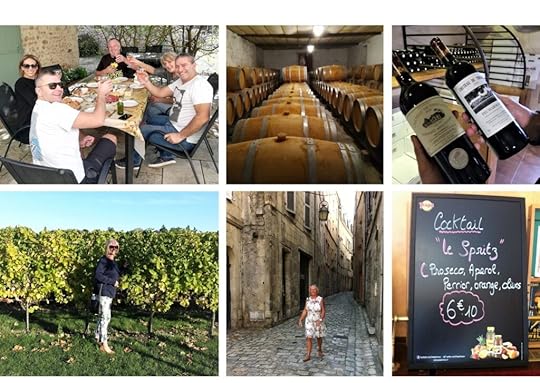 We toured the vineyards with friends and learned about the vins de la région.
We toured the vineyards with friends and learned about the vins de la région.We’ve also lived in the South of France in the Tarn region, not too far away from ‘The Red City’ of Albi, which is a UNESCO site about an hour’s drive north of Toulouse. Again, we were long-term housesitting but over the winter (Christmas was especially lovely here) in a gorgeous old ‘Bastide’ or fortified farmhouse just outside the ancient village of Monestiés – a place originating from the 10th century and now listed as a Les Plus Beaux Villages de France – one of France’s most beautiful villages.
Only this time, in the South of France, we had quite a menagerie of farm animals and pets to look after as well as the large property, the gardens and grounds, and a swimming pool.
I was still writing my books during this time too. But while staying at the farmhouse my dear husband and I divided up the chores equally. I was responsible for feeding and grooming the horse, two donkeys, a flock of sheep, a sheepdog and four cats, as well as mucking out the stables.
The backpacking husband was in charge of all the poultry – geese, hens and ducks, and anything to do with the tractor maintenance and farm outbuildings. It’s safe to say that we were certainly learning how to feel like French farmers!
 In the South of France we stayed in a gorgeous old ‘Bastide’ or fortified farmhouse just outside one of France’s most beautiful villages.
In the South of France we stayed in a gorgeous old ‘Bastide’ or fortified farmhouse just outside one of France’s most beautiful villages. So whether we were living in the South-West wine region or being French farmers in the South of France we enjoyed the wonderful French lifestyle, learned a lot about France, and even more about what it takes for a non-French person to start to feel ‘a little bit French’!
10 Things To Do In France To Make You Feel French 1. SPEAK (Parler):
1. SPEAK (Parler):
Even a basic knowledge of French will help you make friends and make your time spent in France easier and more enjoyable. It will also open up more travel options too as French is spoken widely around the world. The French Diplomacy website insists that French is ‘a beautiful, rich, melodious language that is often called the language of love’. Oh la la!
Personally, I’ve found the hardest part of learning the French language involves understanding the grammar rules. But I’ve also found that practicing a few useful phrases and making an effort to converse in French while in France will set you miles apart from those who refuse to at least try. So don’t be embarrassed to get it wrong.
Plus, fledgling attempts at speaking French is a great way to make French friends!
The French are very polite and friendly. They’ll always greet you with a friendly ‘bonjour’ and a ‘ca va?‘ To say hello and ask of your wellbeing and they will never let you leave without a gusty ‘au revoir’ or ‘à bientôt’ and ‘bonne journée’ and kisses to both sides of your face (left then right).
I started learning basic French online using the free and friendly Duolingo app for an hour each day and then practising what I’d learned in real life while living in France and chatting to our new French friends and neighbours. In times of need (or frustration) I found using Google translate or a similar dual-language translation app to be very helpful.
If you are serious about learning French fluently through a professional tuition programme then you might want to enrol with a Rosetta Stone course, which will teach you the nuances of French pronunciation and accents and importantly, the formal and less-formal, language etiquette.
Getting a ‘feel’ for spoken French is made much easier listening to news broadcasts and programmes online. I would recommend listening to News In Slow French – there is a 7 Day Free Trial – and it’s a fabulous resource for French ‘immersion’ and to prevent that awful feeling of being totally overwhelmed when French is spoken so quickly that it seems impossible for your non-Francophile brain to interpret it fast enough.
So… to feel French you should speak French!
2. EAT (manger):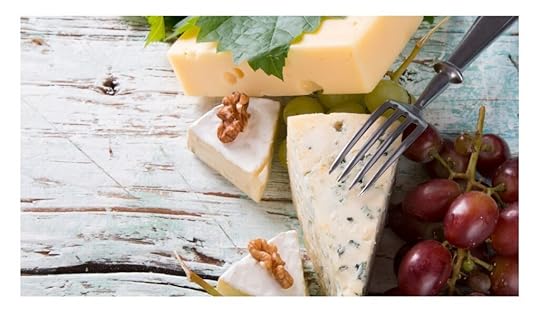
French cuisine is world-renowned and French cheese is plentiful and seriously delicious but actually, nothing is more important to the French than their basic bread (du pain) or more iconic than the French baguette. In France the Patron Saint of bread is Saint Honoratus.
Did you know that the right for a French person to eat bread is protected by law and the traditional recipe for a baguette is protected by the Le Décret Pain (1993) and that there is an annual Grand Prix de la Baguette competition held in Paris to win the title of La Meilleure Baguette de Paris (the best baguette in Paris).
Bread is so important that you can not only buy your baguette from a boulangerie but you can also buy them out of hours from a baguette vending machine. Fresh bread will be served at every meal and is always eaten with cheese (as opposed to cheese crackers which are a British thing).
As someone who often skips lunch in favour of a meal later in the day, I was surprised to discover lunch is considered the main meal of the day in France, and that the French routinely take a two-hour lunch break.
This means that all over France at noon the shops close and cafes and restaurants and brassieres fill up. So be warned, if you arrive any later than noon, you aren’t likely to get a table. And, if you arrive at a restaurant for lunch after 1pm and by pure luck there happens to be an empty table available, then you probably won’t get seated or served. This is because they close at 2pm in preparation for reopening in the early evening for a drink and dinner service.
I have to tell you – admit to you – that I put on lots of weight while living in France (in stark contrast to the majority of svelte French women who show restraint by eating many meals but only ever in very small portions). For me, not so much, as it’s all so delicious.
And, because there are hundreds of French cheeses to choose from and j’adore absolument le fromage (I absolutely adore cheese) and of course all those calorific French wines (j’aime le vin) which brings us onto drinks (les boissons)!
So… to feel suitably French you should always take a two-hour lunch (preferably with wine).
3. DRINK (boire):
Wine: “It is impossible to think of France without wine…” says the World Atlas of Wine, “as it is to think of wine without France”. France produces 7-8 billion bottles of wine per year as so is one of the largest wine producers in the world. I happen to love wine but until I lived in France I never properly appreciated how it was made or that French wines have a regional identity.
Champagne: French Champagne is a sparkling wine which owes its name to the region Champagne in the North-East of France. Often reserved for special occasions but also enjoyed on ‘le weekend’.
Pastis: Particularly famous in the south but very popular all over France as a cocktail, Pastis is made of aniseed and liquorice. Often served as an aperitif with water and mint syrup.
Kir: A cocktail made of blackcurrant liqueur and white wine from Burgundy that is enjoyed as an aperitif in France.
Picon Biere: From France’s north east region, Picon bière is a mix of beer and caramel flavoured bitters made with the zest of fresh and dried oranges.
Calvados: An aged brandy spirit ‘Eau de Vie’ made with apples or pears from the Calvados region in the North of France. Drink as an aperitif or as an after-dinner liqueur.
Cognac: Loved by the French and people all over the world. Cognac is a type of brandy. It is a distilled spirit made from grapes and produced exclusively in the Cognac region of western France. Enjoy as an aperitif or after-dinner liqueur.
Pineau des Charentes. There are a lot of different types of ‘vin de liqueurs’ available in France and among them is the Pineau des Charentes. Served chilled and drunk as an aperitif, this liqueur is a perfect mix of grape wine and cognac.
Cointreau: Cointreau is an orange-flavoured triple sec aromatic liqueur produced in Saint-Barthélemy-d’Anjou in the west of France. It is versatile as an aperitif and used in many popular cocktails like margaritas and cosmopolitans.
Eau de Vie: Known in France as ‘the water of life’ this is an unaged fruit brandy either commercially or homemade from whatever local fruits are to hand. The one I sampled was made from pears. I found it strong and offensive. The backpacking husband loved it and so had a headache the next morning!
It’s not all about alcohol of course because there is Perrier: Perrier is a sparkling mineral water which comes from a source located in Vergèze in France. For me, it’s refreshing bubbles and clean fresh taste make it the champagne of sparkling water. Yet, unlike elsewhere in the world, it is so affordably priced you can drink it in France every day!
S o… to feel truly French you should enjoy lots of French drinks!
4. SHOP AT A FRENCH MARKET: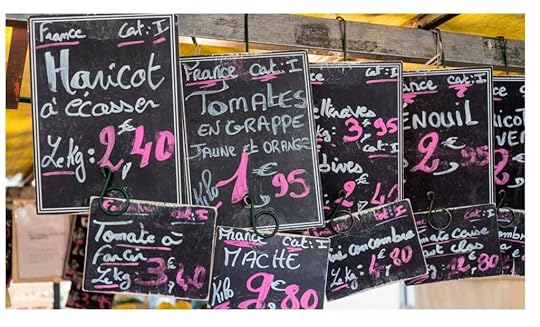
Shopping at a traditional French market is a joy and the very best place to find the freshest produce from local artisans and farmers, fish suppliers and meat producers, fruit and vegetable growers, bread and cheese makers, an incredible variety of sausage and charcutiere and olives, and of course wines.
Most French towns have a market. The one local to us when we lived in France took place on a Friday morning and the stalls would line the village main street on both sides. Often, it was the best place for finding seasonal treasures like an amazing variety of earthy mushroom and the famous ‘black diamond’ truffle and the creamiest of local chevre fromage.
So… to feel typically French you should always shop at a traditional French market!
5. LIVE IN A BEAUTIFUL FRENCH VILLAGE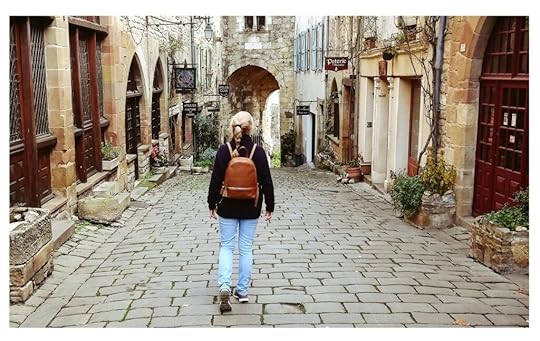
There are around 150 of the most beautiful villages in France ‘Les Plus Beaux Villages de France’ to choose from when looking for somewhere to live in France and thousands of others that also deserve the title. This is because France is a beautiful place and there are so many historic buildings. When we lived in the quintessential medieval village of Monestiés – one of the officially beautiful villages – it was wonderful to experience a slower pace of life and to take a walk into the village and wander around the narrow streets into the square and to admire the ancient church and its old belltower. We also visited the nearby 13th Century hilltop village of Cordes Sur Ciel on a few occasions simply because it was such a pleasure to walk around the steeply sloping ancient streets.
So… to feel quintessentially French you should choose to live in a beautiful French Village.
6. LIVE IN A CHATEAU
Living in a gorgeous old chateau in France really is the stuff of dreams but for many it is a reality. There are thousands of chateaux all over France in various sizes and conditions and according to France Today and 60% of them are bought by overseas buyers at a ‘bargain’ and as renovation project. When I lived in the beautiful Dordogne region for two years – in the countryside between Bordeaux and Bergerac – I lived in a small chateau and it really was a lovely and a truly French experience that I can recommend!
So… to live the high-life and feel French you should certainly live in a beautiful French chateau.
7. Dress:
To feel French and also look French you should always dress in French signature style. And, contrary to popular belief, that doesn’t mean wearing a beret on your head and a wreath of onions around your neck. It means adopting a certain effortless nonchalance and being tres chic at all times.
The key to looking French – and therefore feeling more French and to achieving that all important ‘je ne sais quoi’ factor – is to cultivate an understated look.
Of course, you must take care of your appearance and always be impeccably groomed, but you should never look ‘over done’. Looking truly fabulous as a French person is always accidental.
The French look is simple, ageless, and elegantly understated…
Avoid anything too bold or clashingly colourful. Never, under any circumstances, go garish.
So… to look and feel French have a capsule wardrobe of simple designs and neutral colours.
8. AGE WELL:
Do French people really age well or is it a myth? Well, according to French Women Don’t Get Fat Dotcom: “French women don’t get facelifts and, on average, are more accepting of ageing. Rather than trying to turn back the clock, they want to look good at whatever age they are. In France, there is a saying, ‘life begins at 50’.”
My lovely friend and neighbour in France is So French and she is the epitome of a classic French woman – proving that she does exist – in that she is well-spoken, kind, attractive, slim, and elegantly dressed in French style. She drinks champagne or water and the occasional expresso coffee. My French friend is a great cook and a generous host yet she eats only ever in moderation. And, typically, she has a tiny little dog that she simply adores sitting on her lap or tucked under her arm at all times.
So… to feel So French…we need to try to be more like my lovely and chic French friend!
9. PROTEST:
The French love to debate and to protest and they often do so successfully. Time Magazine says: “It’s part of a national ‘culture of conflict’ that goes all the way back to the 1789 French Revolution when republican forces battled royalists to overthrow the hated French monarchy.”
When I was living in France, I often witnessed the ‘ Gilets Jaunes ’ (yellow jackets) protesting.
What began as a protest against the planned tax rise on petrol and diesel has now become a wider anti-government movement in France. These were mostly peaceful demonstrations conducted with lots of motorists honking their horns in support of the movement. Often the Gilets Jaunes set up a camp at road junctions to block the road and to disrupt traffic. Other Gilets Jaunes protests we’ve witnessed – like the one we accidentally got caught up in and had to run from in Toulouse – was a full-on riot with police resistance and tear gas canisters being thrown in the street.
So… to protest like a French person always have a yellow jacket on display in your car to aid your way through roadblocks.
10. VISIT FRANCE ALL OVER THE WORLD!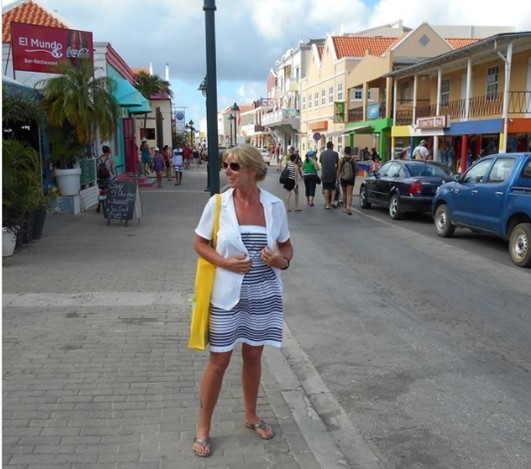 The Backpacking Housewife shopping on the French Caribbean island of St Barthelemy
The Backpacking Housewife shopping on the French Caribbean island of St BarthelemyTo feel French all over the world you don’t actually have to be in European France because France is the only European country to have overseas regions on three different oceans.
All of the residents of the Overseas French Regions are French nationals with exactly the same status as the mainland regions.
France currently has 12 overseas territories that are home to some 2.6 million people.
Plus there are 29 countries worldwide (Switzerland, Canada, Haiti, Morocco, just to mention four) that list French as their official language.
The inhabited French Overseas Regions are:
Saint Pierre and Miquelon – North Atlantic
French Guiana – South America.
French Polynesia – South Pacific
New Caledonia – South Pacific
Wallis and Futuna – South Pacific
Saint Barthelemy – Caribbean
Saint Martin – Caribbean
Guadeloupe – Caribbean
Martinique – Caribbean
Mayotte – Mozambique
Réunion – Indian Ocean
So… to feel French you should travel and practice being French all over the world!
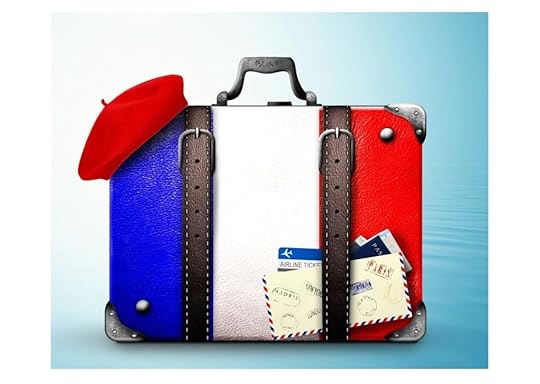


The post 10 Things To Do In France To Make You Feel French appeared first on The Backpacking Housewife.
March 12, 2021
A Secret Place in Scotland
 The Lowther Hills. Photo Credit: Scothill
The Lowther Hills. Photo Credit: ScothillI know of a very special and secret place in Scotland. A place with an incredible history and with astonishing treasures of real national importance. And, yet, it’s a sleepy and unassuming place.
It’s a village small enough to be known as a hamlet with an ancient church and a historic graveyard, a war memorial and a collection of dwellings, all nestling deeply in the wildest of countryside amidst the heather-clad Lowther Hills in the Southern Uplands of Scotland.
The village is called Durisdeer Photo Credit: Walter Baxter / Durisdeer from the southwest / CC BY-SA 2.0
Photo Credit: Walter Baxter / Durisdeer from the southwest / CC BY-SA 2.0Alexander Anderson, a local railway poet known as Surfaceman (1845-1909) wrote a poem called From A Carriage Window about the views across the Lowther Hills and the village ‘hamlet’ of Durisdeer. This is the final verse:
And, how do I know about this special and secret place in Scotland?I saw each and all through the heather, That purple lay spread like a sheet, On the hills that watch over the hamlet, That sleeps like a child at their feet.
Alexander Anderson
Well, the answer is, that I used to live in Durisdeer myself. I lived there for 27 years.
It’s where my husband and I bought a once-derelict shepherd’s cottage to renovate and make into our family home. It’s where we brought up our three children. It’s where we lived amongst a close-knit community of friends and neighbours.
For that reason, this beautiful place called Durisdeer, will always have a special place in my heart.
But, while Durisdeer is where we spent a significant and very special time in our lives before our children grew up and we eventually found ourselves as empty-nesters – selling our home in 2014 to become wandering world travellers – the people and the church at Durisdeer have played a key part in our lives.
“And, as well as playing a key part in our lives, the church at Durisdeer is also a key part of the secrets buried there and the treasures of national importance that I’m about to share with you…”
While I lived at Durisdeer, the heart of the village and therefore the community was focussed around the church. This was undoubtedly all down to the wonderful Late Rev. William (Bill) Scott and his beloved wife Nester Scott.
Rev. Scott was Minister at Durisdeer church for 55 years. Back then, he and Nester lived in The Manse in the centre of the village. With the help of Bill and Nester and the village congregation (and whether you attended the church or not wasn’t a requirement) and with the local Scottish Women’s Institute (affectionately known as ‘the rural’ of which I was a member) we would help organise many of the community activities and village celebrations throughout the year.
 Rev. William (Bill) Scott with my son in 1991
Rev. William (Bill) Scott with my son in 1991We’d attend harvest festivals, Christmas services, and nativity plays and while Rev. Bill Scott held the service in the church, the Sunday school would take place in the ‘laird’s loft’ or old Ducal room. Halloween fancy dress competitions were held in the village hall. Easter egg rolling and other sporting activities took place on the hill at the back of the Manse garden.
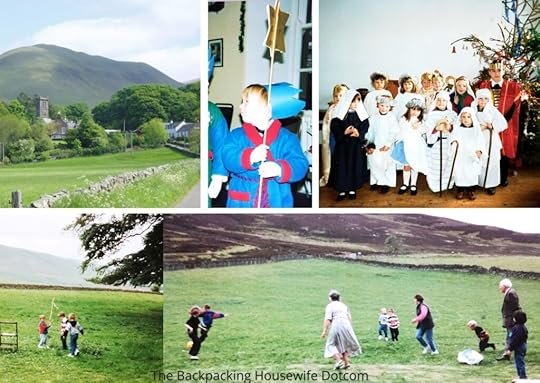 Durisdeer church nativity performance and sports on the hill at the back of the Manse garden
Durisdeer church nativity performance and sports on the hill at the back of the Manse gardenAnd, the highlight of the summertime, the wonderful bi-annual traditional summer fete held in the Manse Garden, which always had me believing we’d stepped back in time to the 1950s. Every Sunday throughout the summer, the church would host cream teas in the Ducal room, which became famous with locals and tourists alike.
Three Hundred Years of Worship. Tercentenary Booklet.“The famous Durisdeer teas are served every Sunday in the kirk over the summer. It is here that visitors to the ancient pilgrim route stop-over can sample the delights of a wide range of home-baked produce by the ladies of the local guild, from scones, fresh sandwiches, cakes, tray bakes and Mrs Scott’s celebrated cream meringues.”
The Dumfries and Galloway News
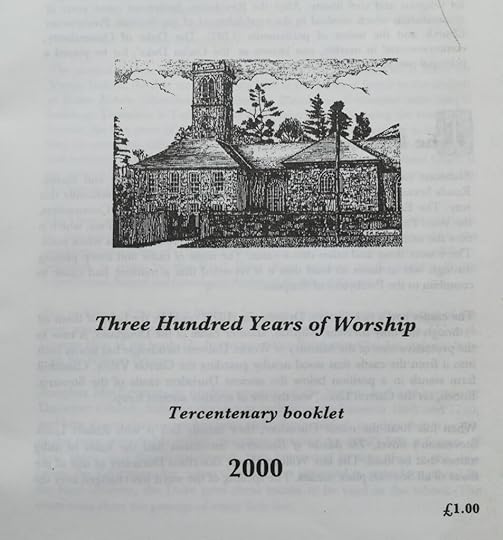 Tercentenary Booklet by Rev. William Scott. Durisdeer Kirk Minister from 1953 to 2008
Tercentenary Booklet by Rev. William Scott. Durisdeer Kirk Minister from 1953 to 2008During the time I lived in Durisdeer, the church celebrated its 300th anniversary in the year 2000. Rev. Bill Scott wrote a booklet with the title Three Hundred Years of Worship to celebrate the history of his church. It is from this booklet I have quoted some text extracts and these are therefore credited to him.
A Small Village with an Incredible HistoryDurisdeer is first recorded in the form ‘Durrysder’ in 1328. This likely represents the Gaelic words dubhros – ‘a dark wood’ and doire – ‘an oak copse’. The name would therefore mean ‘the entrance to the dark wood of the oak copse’ or to be consise ‘the gate of the forest’.
“Someone has described Durisdeer as a parish of historic roads and castles. Roads between Clydesdale and Nithsdale and Galloway pass conveniently this way. The Enterkin Pass, well known for its connection with the Covenanters, the Wald Path, with its Roman Fort in the gorge, and the Dalveen Pass, which is now the main route and where one sees the old Toll House with its white walls. There were these and other drove roads. The noise of cattle and sheep passing through was at times so loud that it is recorded that a Minister had cause to complain to the Presbyterian of Penpont.”
Rev William (Bill) Scott
These days, the beauty of the village and surrounding rolling countryside is unmistakable. And yet, you’d never pass through Durisdeer mistakenly, as there’s only one road in and out again. Although, it wasn’t always that way, because this was once a road well used by legions. That is… Roman Legions.
Astonishing Treasures of National Importance1: THE ROMAN FORT
Incredibly, just beyond this tiny village of Durisdeer and through a wooden gate onto the Wald Path, in an area once historically considered a strategically important crossing point over the Lowther Hills, lies the remains of one of Scotland’s best-preserved Roman Forts dating back to the Antonine period (AD 138-180). It is of archaeological importance and now considered a national treasure of Scotland.
The Fort is now in the shape of an oblong earth mound where only the hardiest of sheep now graze.
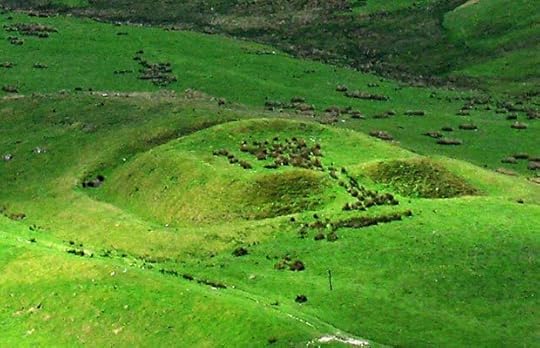 The Roman Fort Durisdeer. Photo credit: Scothill CC BY-SA via Wikimedia Commons
The Roman Fort Durisdeer. Photo credit: Scothill CC BY-SA via Wikimedia CommonsThe Roman Road that once skirted the village leading into the hills and the site of the garrison that once guarded the pass and regulated the use of the road. The Wald Path is now a dirt and grass track flanked by drystone dykes. About a mile south there are also the remains of two much older temporary Roman marching camps believed to date back to the Flavian period (AD 90-105).
 The Roman Road ‘Wald Path’ Durisdeer. Photo: Roger Griffith. Public domain via Wikimedia Commons
The Roman Road ‘Wald Path’ Durisdeer. Photo: Roger Griffith. Public domain via Wikimedia CommonsIt’s incredible that this area – unploughed and undisturbed for centuries – is a window into the past.
Durisdeer Roman Road and Wald PathAnd, as you might imagine, walking the old Roman Road and amongst the hills around Durisdeer and Beyond is a wonderful way to explore this whole area. For a detailed Walking Map click HERE.
2: THE CHURCH
The first mention of Durisdeer church (kirk) is found in the records of Kelso Abbey. The church at Durisdeer that we see today was rebuilt on the foundations of a much older parish church whose first recorded minister is recorded as John de Cader in 1394. The original church was dedicated to St. Mary and rebuilt by the 3rd Duke in 1699.
 Durisdeer Church
Durisdeer ChurchDurisdeer Church, designed by architect James Smith, is built in a typical presbyterian layout with a central pulpit and three galleries with box pews. The north aisle, mostly remaining from the earlier church, is taller and more sophisticated and built to seat the Duke and his family.
Throughout the whole time that a church has stood here in Durisdeer, it has not only served its humble village congregation but also the nearby Drumlanrig Castle and therefore His Grace The Duke of Buccleuch and Queensberry and the Douglas Scott family (the largest private landowners in Scotland).
Indeed, the Lady Amabel Clare Alice Montagu Douglas Scott, daughter of the 10th Duke, and her fiancé Dougal were married in Durisdeer church in December 2020.
Durisdeer Church and Graveyard3: THE SECRETS IN THE CHURCH
The astonishing secret about this tiny village lies buried within its small and unassuming church.
Inside Durisdeer church, behind a wrought-iron screen in the Queensberry Aisle, is the Queensberry burial vault. This burial chamber, part of the original and much earlier church on this site, holds the 12 lead coffins of the ancestors of the Dukes of Buccleuch and Queensberry going right back to Isabella Douglas, Duchess of Queensberry who was the wife of William, first Duke, entombed following her death on 3rd November 1684.
And, not only that, as well as the burial chamber itself, inside the vault room there is an incredible free standing Baldacchino Italian baroque marble mausoleum carved in 1695 by Flemish sculptor John van Nost.
Yes. You read that right. A high-profile Italian marble. Hidden at the back of a tiny church in Scotland!
Yes, it’s an absolute surprise and something of a secret. But, more to the point, it’s a real treasure.
Scotland’s Churches Trust describes the marble mausoleum as “A riot of swagged fabric, garlands of flowers, urns, barley-sugar columns, cherubs, skulls and pediments, all in gleaming white marble”.
The Queensberry Aisle and The Douglas Vault. Durisdeer Church‘There are few buildings in which baroque magnificence and presbyterian decency are so happily combined.’
George Hay. Architecture of Scottish Post-Reformation Churches
4: THE COVENENTERS GRAVE
In the Durisdeer graveyard there are many fascinating old gravestones. One has a woman carved and there is a moss-covered skull. One for David Scott, who died December 12th, 1747. His stone has a horizontal hourglass and crossed bones carved on it with the symbols of a mallet to show his trade as a carpenter.
Famously, Durisdeer churchyard also has the grave of a Scottish Martyr – the covenanter Daniel McMichael.
Covenanters were those people in Scotland who signed the National Covenant in 1638 to confirm their opposition to the interference by the Stuart kings in the affairs of the Presbyterian Church of Scotland.
“The 17th century saw the National Covenant signed in 1638, and there then followed years of strive between Church and State. The Martyr’s Grave against the south wall of the kirk is to Daniel McMichael, who suffered in the struggle for religious and civil liberty. After the Revolution Settlement came years of reconciliation which resulted in the establishment of our Scottish Presbyterian Church and the union of parliaments (1707). The Duke of Queensberry, commemorated in marble, was known as ‘The Union Duke’ for he played a principal part in that historic event”.
Rev. William (Bill) Scott
Daniel McMichael, a covenanter with a considerable price on his head whether dead or alive, had been captured and was being transported to Edinburgh for trial. While en route, on the 31st January 1685, at the foot of the nearby Dalveen Pass amongst the Lowther Hills, he fell ill and to save the problem of dealing with him, the soldiers shot him dead. A monument marks the spot. His grave is in Durisdeer churchyard.
 Old gravestones at Durisdeer Churchyard. Photo credit: (1)Walter Baxter and (2,3) Roger Griffith
Old gravestones at Durisdeer Churchyard. Photo credit: (1)Walter Baxter and (2,3) Roger Griffith The Martyrs Grave and Durisdeer Churchyard. Photo Credit: Rosser1954 (2,4) Walter Baxter (1,3)
The Martyrs Grave and Durisdeer Churchyard. Photo Credit: Rosser1954 (2,4) Walter Baxter (1,3)Lady John Scott’s (1810-1900) song ‘Durisdeer’ has a verse about the ‘auld kirkyard’:
Far up into the wild hills, There’s a kirkyard auld and still, Where the frosts lie ilka morning, And the mists hang low and chill. And there ye sleep in silence while, I wander here my lane, Till we meet ance mair in Heaven, Never to part again
Durisdeer by Lady John Scott
 Lots More Interesting Secrets About Durisdeer Village!
Lots More Interesting Secrets About Durisdeer Village!Durisdeer is famously included in the 1978 film version of The Thirty Nine Steps, starring Robert Powell and a film of John Galt’s Annals of the Parish made use of the interior of the church.
The name Durisdeer is used in the Robert Louis Stevenson novel The Master of Ballantrae.
Durisdeer is the setting for part of Salman Rushdie’s The Satanic Verses. Rushdie was ‘holed up’ in Durisdeer during his fatwa and describes it as ‘a village so small it doesn’t have a pub.’
Astronaut Neil Armstrong, the first man to set foot on the moon in 1969 signed the Durisdeer Visitors Book while he was a guest at Drumlanrig Castle.
King James IV, on pilgrimage in 1497, stayed overnight at a lodging Durisdeer. The King’s Lord Treasurer’s account is: ‘to the Wife of Durisdeer where the king lodged 14s’.
Pilgrims passed through Durisdeer on route to the shrine of Saint Ninian at Whithorn.
A modern cemetery to the south of the village of Durisdeer contains the graves of ballerina Moira Shearer (1926 – 2006) and her husband author and broadcaster Sir Ludovic Kennedy (1919 – 2009)
In the year 2000, The Duke of Buccleuch gifted Durisdeer a clock, which was placed in the church tower to mark the millennium and the tercentenary of the church.
Isn’t it incredible that such a small and assuming place – my secret place in Scotland – tucked away in rolling heather-clad hills, has hosted and protected not only my own family over the years, but Kings and Dukes and Duchesses and pilgrims and outlaws – as well as a famous astronaut and an author in hiding and sculptors and poets and dancers and songstresses and movie-makers.
Durisdeer has such an amazingly rich history and it houses national treasures of Scotland that can still be appreciated today… if only you know exactly where to look!
HOW TO FIND DURISDEER:Durisdeer lies 6 miles (9.7 km) north of Thornhill and via Carronbridge on the A702.
OS Grid Reference NS893036

Undiscovered Scotland on its website states: Durisdeer is a tiny hamlet nestling at the foot of the Lowther Hills in the Southern Uplands of South West Scotland.
From the South: About an hour’s drive (approx 50 miles) over the border from Carlisle on the A75 and then A76 trunk roads. Then from the A76 just north of Thornhill at Carronbridge take the A702 road.
From the North: Take the M74 and exit at J14 and follow the A702 road.
Durisdeer is signposted and is accessed from the A702 by two very narrow roads that merge and go no further than the village itself. As a result, the village is little known and seldom visited.
Do you have a special and secret place that you hold dear in your heart?
Don’t hesitate to tell me about it in a message below!
The post A Secret Place in Scotland appeared first on The Backpacking Housewife.
March 1, 2021
New Year Reflections… why I’m Celebrating in March
Throughout the world, the first day of the New Year is most widely recognised as being the 1st of January. This is of course under the Gregorian Calendar which was established as a standard time system back in 1582 as a refinement of the Julian Calendar (the first Solar Calendar in 45 B.C.) but with the exception of Easter, which is still determined by a lunar calendar.
But for me, my New Year is always in March, on my Birthday.A solar year is the time it takes our Earth to orbit the sun which is around 365 days.
My birth in the earth’s northern hemisphere in early March, places me in the astrological solar charts as a Pisces.
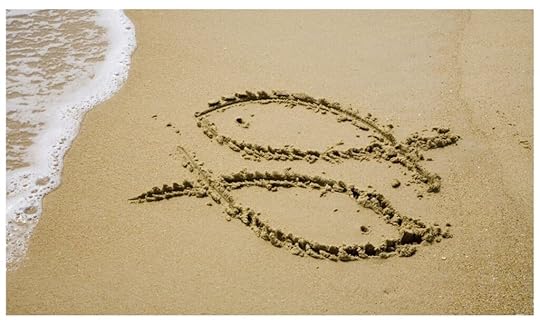 In the astrological zodiac calendar I’m a Pisces
In the astrological zodiac calendar I’m a PiscesPisces is the last sign in the astrological zodiac calendar and portrays me as a fish. However, in the Chinese zodiac, I’m a rat and the very first sign in the animal zodiac sequence. So, if you think about it, how we quantify and relate to time and when we choose to contemplate and indeed celebrate a New Year – really does depend on where you are born, your culture, and your religion if you have one – and your frame of reference.
Solar New Year or Lunar New Year ?In the Special Theory of Relativity, Einstein determined that time is relative to your frame of reference.
 Do you follow the sun or the moon…?
Do you follow the sun or the moon…?Interestingly, depending on culture, many people of the world consider the exact time and date of their New Year not on the sun and standardised solar cycle but by the moon or lunar calendar.
A lunar year is 12 full cycles of the Moon, which is around 354 days.
And, because of the difference between a solar and lunar year, those using the lunar calendar insert a 13th month into every 3 years. This explains why some people and countries of the world will often celebrate their New Year on unfixed days or months of the year.
As midnight approaches on New Year’s Eve, many people choose to take a moment to quietly reflect on the year that has passed. It’s a poignant time to pause and take stock of the direction of one’s life. The promise of a New Year is in many ways a fresh start in life and a wonderful time to celebrate and to make special and regenerative plans and promises to ourselves so we can progress and move forward into our new future with hope and positivity.
So, in this post, in my birthday month, I’m looking back at a year in which the whole world changed and ponder on how we might all move forward in the New Future. Not just for me personally but for all of us. I believe, 2020 was a year which – true to Einstein’s Theory – proved to us all that time is indeed relative.
 Maybe it’s no bad thing to have time to pause and to reflect on the past and the future?
Maybe it’s no bad thing to have time to pause and to reflect on the past and the future?It’s been a year in which I’ve sometimes felt overwhelmed and to some extent traumatised by the lockdowns that have curtailed our freedoms of movement. I’ve often felt afraid for my loved ones and for myself with the unprecedented spread of the Covid-19 that has led us to this global crisis.
But it’s also been a time in which I’ve sometimes felt not so much trapped as cocooned and paused.
It’s often felt like time has stood still. But maybe it’s no bad thing to have time to pause and to reflect on the past and the future?
New Year Reflections… looking backAnd, I know from reading your social media posts on Twitter and Facebook and Instagram, that you’ve all felt the same conflicting ways to more or lesser degrees about being in lockdown. These are, after all, unprecedented times.
In early March 2020, I was living in South West France. The backpacking husband and I were housesitting in a beautiful 500- year-old chateau. We’d made lovely French friends and had settled happily into a quiet French life.
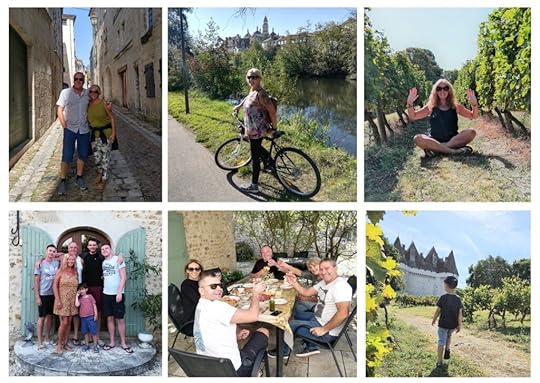 We settled happily into French Life and had several visits from family & friends
We settled happily into French Life and had several visits from family & friendsWe received occasional invitations from our lovely French neighbours for aperitifs and dinner, which we reciprocated. We also had several visits throughout our time in France from our family and friends in the UK and from our son and his family all the way from South Korea. But, as we were living in an isolated area deep in the French countryside, for most of the time we were already living a socially-distanced lifestyle (was that even a term we ever used before 2020?) without actually realising it.
This suited us in any case, I was writing most of the time to achieve my book deadline for my Backpacking Housewife Series of books published by HarperCollins, while my husband was busy managing the chateau, maintained the grounds and the swimming pool and the two rental gites.
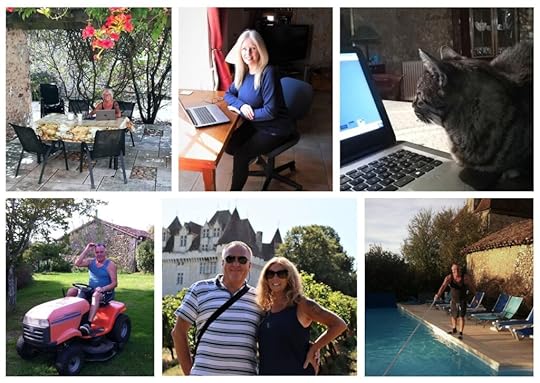 I was writing most of the time to achieve my book deadline while my husband was busy managing the chateau and grounds
I was writing most of the time to achieve my book deadline while my husband was busy managing the chateau and groundsIn March 2020, life in France was kind of idyllic. We’d learned a little of the French language and lots about French wine.
But in March 2020 we knew that was all going to change because we’d made plans to travel again.
On 1st March, I sent my final manuscript to my editor in London and a few days later, I celebrated my 60th Birthday.
A milestone birthday and a brand new decade in life that was looking forward to in many ways. For my birthday, my darling husband had, unbeknown to me, risen early to decorate the chateau’s huge kitchen with birthday balloons and streamers and flowers. He then presented me with my breakfast in bed and his gift.
 My 60 Ans Birthday with balloons and champagne and breakfast in bed!
My 60 Ans Birthday with balloons and champagne and breakfast in bed!His special gift to me was a fabulous collection of video clips that he’d meticulously collected and put together of all my family and friends from all over the world wishing me a happy birthday. It was wonderful!
And, I still don’t know how he managed it, but it ended with Donny Osmond (my teenage crush) singing ‘It’s Your Birthday’ to me! What? How? As you can imagine, I was thrilled and tearful and completely bowled over!
Leaving FranceMid-March 2020, very early in the morning and before we could hear any news of the day, we left France to fly to the UK as planned. We bade an emotional farewell to our dear French friends and to Mr Smudge – the cat in the chateau who had often kept me company while I was writing – and we left France with the two backpacks that we’d first arrived with to fly from Bordeaux to London.
From London we would take a short flight to Scotland to spend a weekend with two of our sons who live in Glasgow and Edinburgh, before taking a train down to middle England in order to spend a few days with family and friends before continuing our train journey back down to London from where we would fly across the Atlantic to the USA before heading over to Central America and onto the Caribbean with a plan to return to the UK in October, to attend our eldest son’s wedding in Edinburgh.
We had made so many plans for the year and we were so excited to be setting off travelling again!
But, little did we know, while we were busy booking planes and trains and busses and boats, that the deadly virus in China had now migrated into South Korea and that the news of it was about to strike down all our carefully made plans.
Then, having seen the news coming from South Korea, we were very concerned about one of our sons. He lives in Daegu South Korea with his wife and her family and our little grandson. News coverage showed all sorts of harrowing scenes from Daegu – a city we have visited many times – with people being told to stay in their homes and streets being disinfected by men in white suits and full-face masks.
I’ll admit that I suddenly had a really bad feeling about leaving France and about everything generally.
I expressed my feelings and my fears to my backpacking husband, who assured me that we were doing the right thing in giving up our long-term housesitting in France (the homeowner had found house sitters to replace us) and everything would be okay. After all, our flights were all confirmed and we’d spent the past few months planning our trip meticulously.
Only, when we arrived in London we discovered that the USA had just banned all entry from travellers from Europe. The UK wasn’t included in that proviso yet. But it was only a matter of hours before it was and, as we’d just come from France, we knew we wouldn’t be allowed to board our flight to the USA.

We suddenly realised that our carefully made plans had fallen like a line of dominoes and that we wouldn’t be leaving the UK to stay at the hotel that we’d booked for an overnight in Miami before flying onto San Pedro Sula in Honduras Central America and that we’d no longer be taking the small plane that we’d chartered over to the island in the Caribbean. Because there was a travel ban. A lockdown. A rule about staying home.
Except… we didn’t have a home. Location free suddenly meant homeless.
We couldn’t expect family of friends to accommodate us for however long this took to ‘blow over’.
We flew as planned from London to Scotland and stayed one night with each of our sons. We watched the news at home and abroad. We chatted with our son in South Korea. His city – Daegu – a city previously unknown to most of the world was now headline news and was being talked about on every channel on UK TV and probably throughout the world. We were now very worried about what was happening there and how it would affect our Korean family.
In England, we were supposed to have been staying with my Mum for a few days, sleeping in her spare room. I hadn’t seen my Mum since last June when she’d visited us in France. But I knew my Mum was vulnerable. She’s been having treatment for breast cancer over the past year and was in the category that now needed ‘shielding’.
Because of the awful news from Italy, anyone coming into the UK from anywhere in Europe was now being treated with suspicion and considered at risk of carrying the virus, and so tearfully and over the garden gate and at two meters apart, we told my mum that we couldn’t stay with her as planned after all.
Thankfully, my dear best friend came to our rescue and offered to share her home with us. I will be forever grateful to her as by now I was stricken with panic and anxiety. When we’d sold our home and our cars and everything we owned to travel the world and live like world travelling nomads – we’d had no idea that six years on there would be a global travel ban.
We had thought, back then, that we were grabbing our chance to travel and see the world in mid-life (we were aged 54 and 55 at the time) before time got in our way – before we got too old or we lost our vitality and health – and not because of a global pandemic happening at any time in the near future.
In hindsight, do we have regrets? No. Instead, I’m extremely thankful we decided to travel when we did.
Feeling Thankful
Because over the past years of travel we’ve had the most amazing adventures and met so many fantastic people along the way. If anything, this situation has only reinforced our desire to travel and our wanderlust.
I’m also thankful that our decision to leave France turned out to be the right one.
Because we’ve somehow managed to end up living back in our homeland of Scotland. And, for the past year, we’ve been renting a house very close to the house we’d sold seven years ago. In many ways, it feels like life has come full circle for us and we are exactly where we are meant to be right now.
Spring and summer in Scotland during 2020 were lovely in many ways. The weather was amazingly warm and sunny for how I remembered Scotland. Even Autumn was mild and golden as the leaves turned and fell to the ground. And, the wintertime was of course very cold and snowy and that was bit of novelty, after spending so many winters abroad and in tropical places!
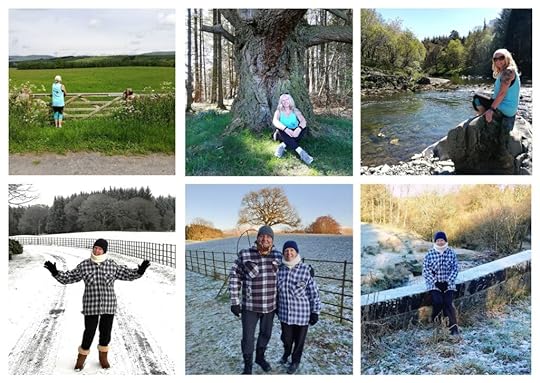 Spending all four seasons in Scotland after seven years away…
Spending all four seasons in Scotland after seven years away…By early summer 2020, the news from South Korea was improved. Thankfully, the virus had been swiftly brought under control there. Their track and trace efforts were working and lockdown measures where slowly starting to be relaxed.
Our family in South Korea were safe and we could breathe again.
And, when the First Lockdown ended in Scotland and the rest of the UK, to be replaced with strict social distancing measures, we got out and about and to see our other two sons again. We took the bus to Edinburgh using our new bus passes (the over 60’s in Scotland get free bus travel within Scotland!) We ate out to help out’ (WHAT WERE THE GOVERNMENT THINKING BTW?) and I was able to meet a dear friend in town for lunch.
My mid-summer we could see our sons who lived in Scotland even had friends over to dinner.
In August my dearest best friend (who’d so bravely and thoughtfully had helped us out back in March when we had nowhere to stay) came to visit us. She and I went off on a girly-weekend to Edinburgh together staying in a hotel during what would have normally been the time of The Fringe and Festival. But, with no tourists around, we had the streets of Edinburgh to ourselves. The bars and restaurants were all open (with social distancing measures in place) and so we were able to have our lunch at our favourite restaurant The Witchery by the Castle and our tour of Edinburgh Castle was like no other we or anyone else has ever experienced – no lines, no queues – no people at all.
 In August 2020 our tour of Edinburgh Castle was like no other we or anyone else has ever experienced
In August 2020 our tour of Edinburgh Castle was like no other we or anyone else has ever experiencedAlso during the summer, as being back in Scotland really was an unexpected bonus for us, we decided to make a checklist of all the helpful things we could do during our time here that would facilitate our future travels. After all, it had been seven years since we’d been ‘on the grid’ and many of those years had been spent in third-world countries.
We’d also calculated that the small storage facility we’d rented seven years ago, to keep six-years of business accounts for tax legality purposes and to store a few personal items that we’d found hard to part with at the time together with a couple of suitcases of winter clothes, had ended up costing us way more than the value of those items.
So this was what that checklist looked like: Clear and cancel our storage facility. Sell anything of value. Apply for our Over-60’s free bus passes. Get eye tests and new reading glasses. See a dentist. Check we were still registered with a health centre in anticipation of our Coronavirus and future travel vaccines. Get back on the UK electoral register.
Feeling unable to concentrate on writing another novel (I’ve heard that writer’s block is a real issue during 2020) instead I turned my attention to taking digital photos of all our old photos in our family photo albums (that had been in storage) to upload to my cloud photo storage for the future.
I also invested in lots of time and money on online study courses to do with building up this new travel website at The Backpacking Housewife Dotcom in order to focus on inspiring and helping people with wanderlust to travel more when it is safe to do so again. Because I’m convinced, now more than ever, that those of us with wanderlust in our souls will still want to escape what we might now consider a captive lifestyle in favour of expanding our horizons in the New Future and when it is safe to travel again.
A Scottish Wedding“I want to positively encourage and inspire all of you who dream of having travel adventures to start planning for that dream life right now and to do so while we are all paused.”

As summer waned and the weather cooled we were looking ahead to the Autumn and to October when our eldest son was to be married in Edinburgh. When suddenly there was news of a ‘second wave’ of the virus.
The Scottish First Minister Nicola Sturgeon warned of Second Lockdown restrictions.
Restrictions that would bring in compulsory facemask wearing and affect all social gatherings… and weddings. We already knew of dear friends who’d had to postpone their weddings in 2020. And, it was obvious at this point, that the grand Scottish Wedding our son and his fiancee had planned at a beautiful wedding venue just outside Edinburgh on the side of a Scottish loch with lots of guests and a big party afterwards was not going to happen. But, according to the new rules, it could still go ahead with a minimum amount of guest.
A new and smaller wedding venue was hastily found but many family and friends – who had already booked hotels and bought their wedding outfits – were told they now sadly couldn’t attend.
But, just two days before the new and hastily planned wedding, the Second Wave of the virus had become an even bigger threat and it was hastily announced that even tougher restrictions were coming into effect in Scotland on the day of the wedding. We called our son and our daughter-in-law to be and they told us to grab our wedding outfits and get onto the next bus to Edinburgh because the wedding had been brought forward one day to beat the restrictions!
For those who could be there: the bride and groom and the officiant, myself and my husband as mother and father of the groom, together with the groomsmen and bridesmaids and the mother and father of the bride – it was a special and intimate and very beautiful wedding ceremony – even though we were all wearing masks.
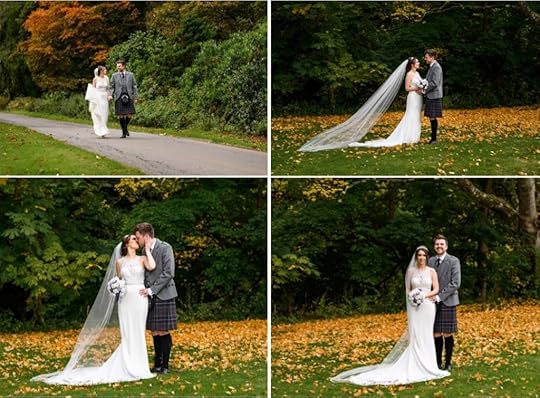 A Scottish Wedding: Our son and his lovely new wife on their 2020 Wedding Day
A Scottish Wedding: Our son and his lovely new wife on their 2020 Wedding DayA Scottish ChristmasWe all had a glass of champagne outside afterwards and the bride and groom were whisked away for photographs in the park. For those who couldn’t be there and for those of us who had wanted to celebrate long into the night but couldn’t, there is an ‘after-party’ planned at the original wedding venue by the loch but in November 2021.

At times, during 2020, time often seemed to either stand completely still or be on a repetitive loop something like a Groundhog Day, but suddenly it was December and Christmastime. It was the first Christmas we’d spent in Scotland for 7 years.
And, every day, my Facebook memories popping up are of December’s and Christmases spent in far off corners of the world.
There are photos and video snippets of us in tropical places with our skin deeply tanned, smiling and waving at the camera, wearing swimsuits and Santa-hats on white-sand beaches or onboard dive boats on warm seas off the islands of the Philippines, Thailand, Malaysia, and the Caribbean.
 Facebook memories keep popping up of December’s and Christmases spent in far off corners of the world.
Facebook memories keep popping up of December’s and Christmases spent in far off corners of the world.I’m feeling rather strange and wistful about it all. Life back in Scotland still feels surreal and unreal.
Did we really travel all the way around the world… twice… or was it just a dream?
I console myself in knowing that this year it might be freezing cold and snowing outside but we have a cosy and affordable home to live in and a log fire burning. And importantly, for the first time in seven years, although I still couldn’t see my Mum or my siblings or my nieces or nephews – we’ll get to see two of our three sons at Christmastime – and that it would be an extra fabulously wonderful bonus.
So, we got a real Christmas tree for the sitting room and I started decorating the house and ordering gifts for Christmas much earlier than I’ve ever done before. I was so excited.
Except, of course, the Third Wave happened and Christmas was cancelled.
I will admit to you that just like millions of others on that day of the announcement about even tougher social distancing restrictions over Christmas – made just a few days before Christmas – made me cry for a while. Then I dried my tears and we spoke to our sons on the phone – while staring sadly at their wrapped presents under the Christmas tree – and we all agreed that we’d see each other and celebrate in the New Year.
I also knew we had a First Minister in Scotland who was doing her very best in the most terrible of times by putting people’s safety and welfare and health as a priority in unprecedented times.
However, a great spark of joy was to be had when our youngest son, who lives in a flat in Glasgow and works both from home and online, told us he didn’t want to spend Christmas alone and he’d like to come and join our ‘bubble’ in which, under restrictions, one person from another household was allowed to join another… and we were ecstatic!
He arrived on the 20th of December and stayed over Christmas and Hogmanay and for all of January for a total of six weeks. It was wonderful and I’m so very thankful that we had all that quality time together.
Sadly, we have yet to see our eldest son and his new wife in Edinburgh or any other family members, but we are hopeful that can happen soon because the Covid-19 Coronavirus vaccine programme is now well underway in Scotland and the UK. We are told – as over 60’s – that we can expect our first dose of vaccine in March 2021.
Just in time for my birthday and in time to celebrate my New Year!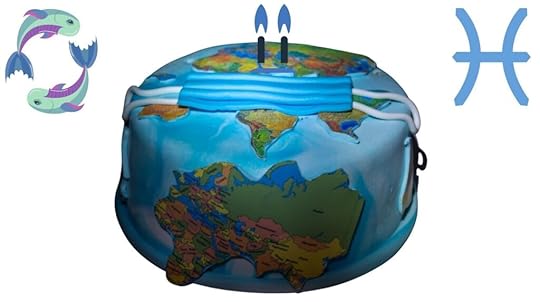 Time to celebrate a New Year and a New Future?
Time to celebrate a New Year and a New Future?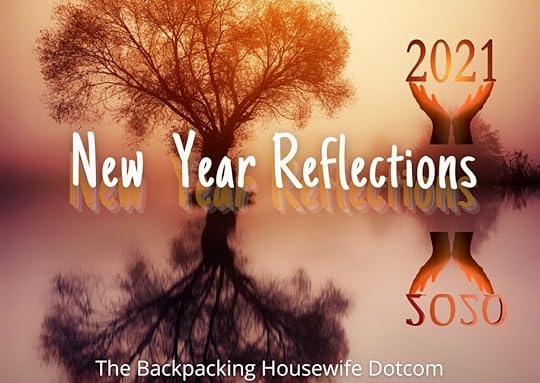 NEW YEAR THROUGHOUT THE WORLD
NEW YEAR THROUGHOUT THE WORLDMost Countries: The first day of the civil year according to the Gregorian calendar is January 1.
Russia – Serbia – Macedonia and Ukraine ( Eastern Orthodox Church) celebrate New Year on January 14.
Chinese New Year: ‘Chunjie’ is lunisolar and can happen anytime between January 21 and February 20.
Vietnamese New Year: ‘Tet’ is celebrated in either at the end of January or in early February.
Mongolian New Year: ‘Tsagaan Sar’ is celebrated on February 16.
Bali New Year: in Indonesia this island celebrates their New Year or ‘Nyepi’ on March 7.
Iranian New Year: ‘Nowruz’ is celebrated on March 21.
Hindu New Year: ‘Vikram Sawant’ is celebrated on March 22.
Northern Iraq and North East Syrian New Year: is celebrated on April 1.
Thailand’s New Year: ‘Songkran’ is celebrated between April 13-15.
Myanmar (previously Burma) New Year: ‘Thingyan’ – like many Asian countries also celebrate mid-April.
Nigerian New Year: ‘Ibgo’ is celebrated in late April.
Sri Lanka’s New Year: ‘Aluth Avuradda’ and Cambodia’s ‘Chol Chanam’ and South India’s ‘Puthandu’ and the Bengali (Bangladesh) New Years are celebrated on April 14.
Ethiopian New Year: ‘Enkututash’ is celebrated on September 11.
Islamic New Year: ‘Hijri’ is celebrated on September 22 to mark the journey of the prophet Mohammad from Mecca to Medina.
Jewish New Year: ‘Rosh Hashanah’ is celebrated in the 7th month of the Hebrew calendar usually in September or October .
Murador New Year: The Western Australian Aboriginal Tribe Murador celebrate their New Year on October 30.
India’s New Year: ‘Diwali’ or Festival of Lights is celebrated between mid-October to mid-November depending on the moon’s cycle.
The Inuit (people of the Arctic Region) New Year: is celebrated on the 24th December.
When do you celebrate your New Year?
How has 2020/2021 been for you?
How have you coped during the three lockdowns?
What are you looking forward to most in the New Future?
How does travel feature in your New Future?
Leave a comment and I promise to reply!
Share the Love with a Repost Tweet and Pin!
The post New Year Reflections… why I’m Celebrating in March appeared first on The Backpacking Housewife.
February 23, 2021
25 Affordable Perfumes That Smell Like The Beach
If, like me, you are longing to travel again and you feel that your soul really belongs at the beach or near to the ocean, then I suggest closing your eyes and inhaling an evocative scent of a perfume that smells like the beach.
Just breathing in a fabulous fragrance that reminds you of that wonderful beachy and salty smell of your summer holidays can be both comforting and compelling.
It can evoke your precious memories of long summer days, hot sunshine, warm sand, sunscreen, saltwater, tropical flowers, coconuts and exotic fruits, and provide you with a much needed sensory beach escape until you are able to have a real one.
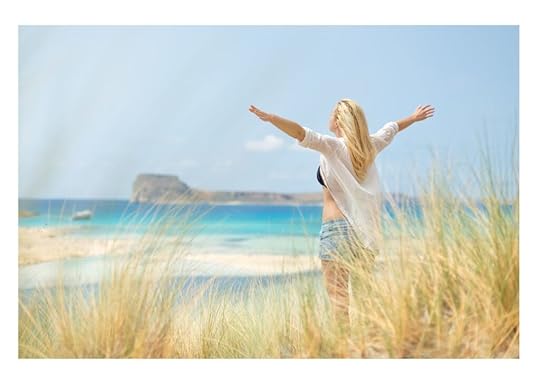 Evoke precious memories of long summer days with a perfume that smells of the beach!
Evoke precious memories of long summer days with a perfume that smells of the beach!But, of course, you don’t want a perfume that smells like the beach to actually cost you the price of a beach holiday.
So, I’ve put together a list of 25 the best inexpensive budget perfumes and affordable fragrances that with one long sultry whiff, will evoke your beach walk travel memories. Fragrances that with one long sultry whiff will evoke your beach walk memories.
Fragrances that with one long sultry whiff will evoke your beach walk memories.But, as perfume is such a personal matter, it’s important to consider which scent suits you best.
Are You A Mermaid?Do you long to evoke the scent of the seas and the oceans with aquatic notes of sea-spray, seagrasses, and salt water?
 Are you a Mermaid?A Beach-Babe?
Are you a Mermaid?A Beach-Babe?Or to be enveloped by the scent of your favourite sunscreen, with a base tone of frangipani and tropical orchid?
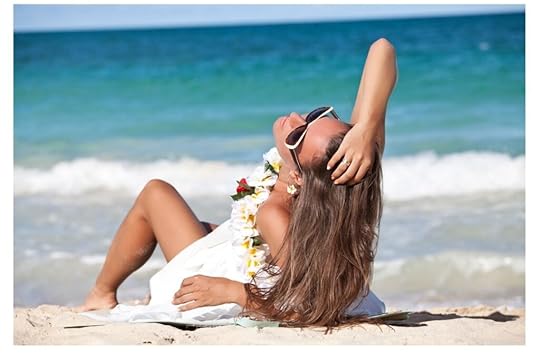 Are you a beach babe?A Tiki-Bar Lover?
Are you a beach babe?A Tiki-Bar Lover?Or, maybe you want to be reminded of a summer rum cocktail – a delicious pinacolada with the fresh scent of pineapple and coconut or the zesty citrus and mint bouquet of a mojito?
 Maybe you want to be reminded of a summer rum cocktail?HOW TO FIND YOUR PERFECT BEACH PERFUME
Maybe you want to be reminded of a summer rum cocktail?HOW TO FIND YOUR PERFECT BEACH PERFUMEWhich one of these 25 best perfumes that smell like the beach will take you back to those lazy hazy beach days in the heat of the sun and to your favourite tropical islands, where you lay in the hot summer shade on your lounger with a cocktail in one hand and a summer beach read in the other?
His? Her’s? Unisex? It doesn’t really matter!
As 33 percent of women wear fragrances marketed to men, don’t be afraid to ignore the rules, push your boundaries and trust your nose in detecting the right scent for you despite the marketing.
After all, the perfume you wear says so much about you and your personality.
Choosing a fragrance might seem like a complex issue but knowing what key ingredients you personally enjoy and then detecting them in the right ‘notes’ will help you achieve your sensory beach experience.
It’s just down to choosing your fusion of floral, fresh, oriental, or woody.
A blend of those essential elements will reflect your very own essence and capture your signature beach scent and help you determine the best perfume for a beach vacation.
The scent of the sea: the key character for this fragrance is called ‘calone’ also known as ‘watermelon ketone’. It’s a light and airy and fresh popular ingredient used to achieve a ‘marine’ or ‘ocean breeze concept’ in a perfume.
Sunscreen: Coppertone? Hawaiian Tropic? Piz Buin? Perfumers have worked hard to blend the oils of Green Herbs, Jasmine Infusions, French Lavender, Rose and Lilac to replicate the sensory experience of wearing tropical fruits and floral fragrances in your suntan lotion inspired scent.
Summer Cocktails: pairing your favourite summer drink with your perfume makes for a heady and sensual experienced evoking earthy wood tones and musky blends of bergamot with coconut wood and tonka bean to create a delightfully creamy, nutty vibe. A delicious and extravagant infusion!
 It’s just down to choosing your fusion of floral, fresh, oriental, or woody...
It’s just down to choosing your fusion of floral, fresh, oriental, or woody... 25 AFFORDABLE PERFUMES THAT SMELL LIKE THE BEACH
25 AFFORDABLE PERFUMES THAT SMELL LIKE THE BEACH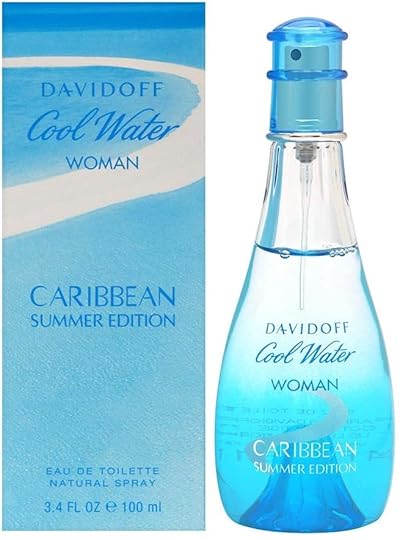 BUY
BUY
Davidoff Cool Water Caribbean Summer: transport your senses to a dream destination with white sandy beaches and rippling waves. A floral and fruity fragrance with top notes of melon, pineapple, and mint. Middle notes of lily-of-the-valley. Base notes of orris (an ancient and earthy scent with violet flower nuances). BUY FROM AMAZON
 BUY
BUY
Sol de Janeiro Brazilian Crush Body Fragrance Mist: Be a Brazilian beach babe: The warm scent is bursting with enticing layers of Pistachio and Salted Caramel to keep you ‘cheirosa’ (smelling absolutely delicious) on the beach from sunrise ’til sunset. BUY FROM AMAZON
 BUY
BUYVictoria’s Secret Beach Orchid Fragrance Mist: A body mist with a warm fruity composition inspired by equatorial forests with orchid, honey, and coral flowers. BUY FROM AMAZON
 BUY
BUY
Clinique Happy Lily of The Beach Parfum: A Floral and woody scent that is expressive and exotic. Escape to an ocean beach on a perfect summer day with sweet Solar Lily, Frangipani, and Coconut. Notes of bergamot, solar lily, ylang-ylang, tiare, frangipani, sandalwood, vanilla, amber. BUY FROM AMAZON
 BUY
BUY
Pacifica Island Vanilla Spray Perfume: Inspired by the Polynesian island of Tahiti, Pacifica’s Island Vanilla Spray Perfume mixes the fruity and floral aroma of Tahitian Vanilla with a creamy rich Bourbon Vanilla for a truly exotic blend reminiscent of these South Sea islands. BUY FROM AMAZON
 BUY
BUY
Bryredo Sundazed Hair Perfume: A swish of your hair and a waft of fragrance floats in the air. Sunny top notes of mandarin and Californian lemon to a bold heart of neroli and Arabian jasmine. Channel the warmth of an endless summer as a cascade of white musk injects this citrus scent with the endorphin rush of sugar on skin. BUY FROM AMAZON
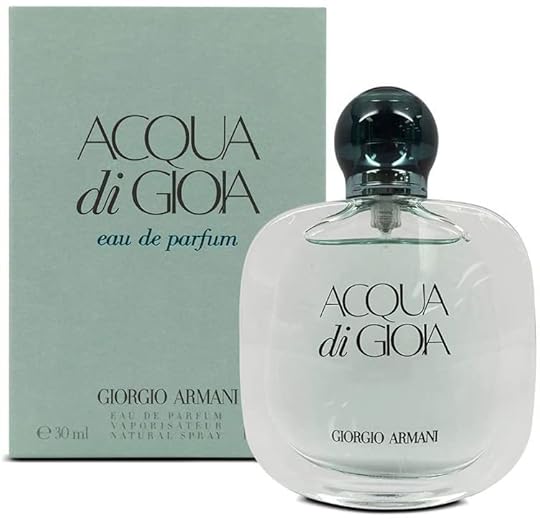 BUY
BUY
Giorgio Armani Acqua Gioia Parfum: This fresh, aquatic fragrance, whose name means ‘water of joy’ captures the simple happiness of a soft sea breeze, bringing forward a sensual blend of cool mint, warm brown sugar and the zest of Italian lemon. Heart notes emerge with beautiful floral hints of jasmine, dew of peony and traces of pink pepper. The base lingers on a uniquely Mediterranean trail of cedar wood and the complex herbaceous accords of labdanum. BUY FROM AMAZON
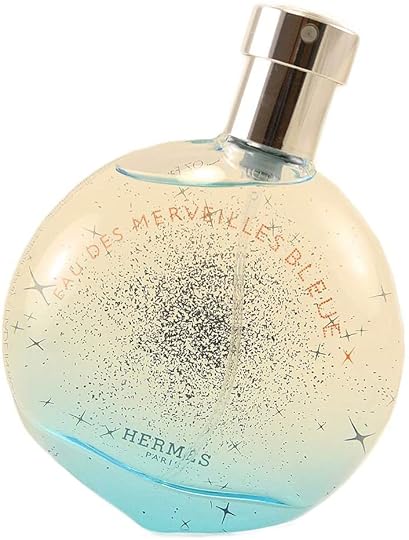 BUY
BUY
Hermes Eau de Merveilles Bleue: An aromatic aquatic mineral fragrance. Inhale the sea notes of patchouli and wood tones that combine to refresh and calm you like a brisk walk along the seashore. BUY FROM AMAZON
 BUY
BUY
Dolce and Gabbana Light Blue Sun: A warm summer tone promises a fresh cascade of bright citrus and white florals with lemons, apple and coconut, with a sweet floral heart of rose, frangipani and jasmine and a musky finish of ambergris, vanilla, and cedar. BUY FROM AMAZON
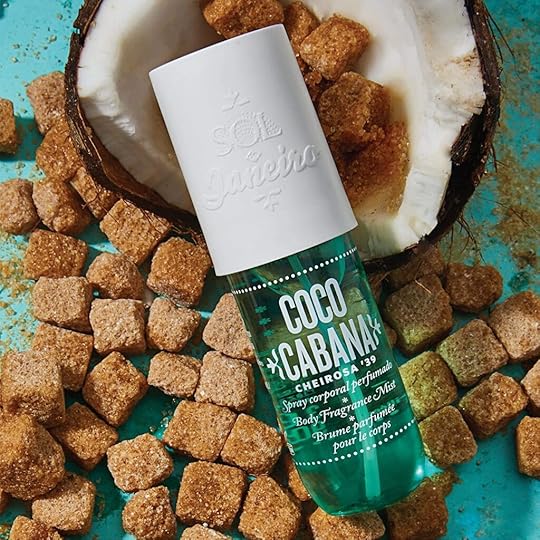 BUY
BUY
Sol de Janeiro Coco Cabana: scented with coconut cream, warm vanilla, toasted praline, creamy sandalwood and tropical orchid to transport your senses to the lush greenery of the Amazonian tropics and the sun-drenched coastlines of Brazil. BUY FROM AMAZON
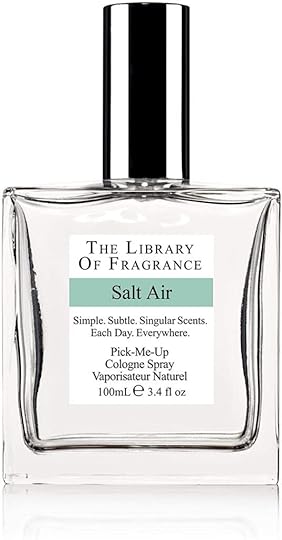 BUY
BUYLibrary of Fragrance Salt Air Cologne Spray: a perfect sea breeze on the perfect beach. Take off to the land of tranquillity where the scent of the sea breeze wakes you up each day and sends you off to dreamland at night. BUY FROM AMAZON
 BUY
BUY
Sisley Eau Tropical: sparkling and exotic with fresh floral notes of bergamot, ginger flower, hibiscus, frangipani and passion fruit. Its base blends cedar, patchouli and the ambrette seed to develop a musky character. A fragrance reminiscent of the intriguing, sultry and perfumed atmosphere that prevails after a tropical rainstorm. BUY FROM AMAZON
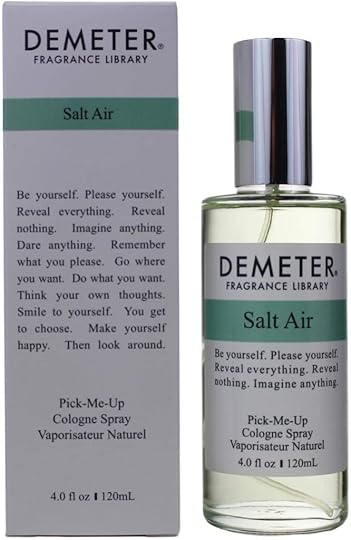 BUY
BUY
Demeter Salt Air: A scent of sea breeze from the sunny beaches of your favourite tropical island. For men and women, this aromatic aquatic fragrance has marine and salty main accords. BUY FROM AMAZON
 BUY
BUY
Estee Lauder Bronze Goddess: Smells like a sensuous sun-drenched endless summer with the alluring sweetness of a coconut-based sun lotion with notes of bergamot, amber, musk, jasmine, citrus, tiare flower, and warm vanilla. BUY FROM AMAZON
 BUY
BUY
Comptoir Sud Pacifique Coco Extreame: Designed for both men and women and to smell like paradise. Inspired by the passion and fragrance of the Pacific Islands. BUY FROM AMAZON
 BUY
BUY
Hermes Un Jardin Sur Le Nil: Elements of water and sand with hints of green mango and lotus blossom meld with woody tones and exotic incense. BUY FROM AMAZON
 BUY
BUY
Juliette Has A Gun JHG Vanilla Vibes: An oriental salty and sultry fragrance for both women and men. Top note is Salt. Then Vanilla and Orchid. Base notes are Tonka Bean, Sandalwood, Musk, and Benzoin (a sweet wood resin). BUY FROM AMAZON
 BUY
BUY
Tocca Bianca Eau de Parfum: inspired by the sea and the cliffs of the Amalfi Coast incorporating bergamot, lavender, lemon, rose petals, jasmine, green tea; musk and sugar-sweet notes. BUY FROM AMAZON
 BUY
BUY
Bobbi Brown Beach: Captures the essence of summer at the beach. This popular light fragrance is designed with notes of sand jasmine, sea spray and mandarin, to remind you of sun-soaked days and the scent of sun lotion. BUY FROM AMAZON
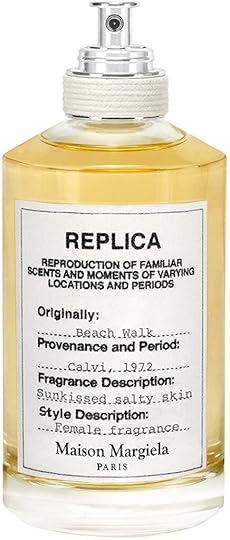 BUY
BUY
Maison Martin Margiela Replica Beach Walk: A sensual blend of suntan lotion evoking the essence of sun-kissed salty skin with floral notes with a base of woody musky elements with bergamot, pink pepper, ylang-ylang, heliotrope, coconut, and cedarwood. BUY FROM AMAZON
 BUY
BUY
The Body Shop Coconut Body Mist: A lightly scented body mist infused with a tropical coconut fragrance. This light body mist spray is fun to wear and refreshingly sweet, wonderfully coco-nutty, and lasting but never overpowering. BUY FROM AMAZON
 BUY
BUY
So Bali Breeze Fragrance Mist: transports your thoughts to lazy and carefree days on the beach. Its mellow notes of coconut, pineapple and pretty orange blossom create a fragrance that is soothing and calming to your senses. BUY FROM AMAZON
 BUY
BUYHawaiian Tropic Exotic Breeze Fragrance Mist: Indulge in an exotic island experience and awaken your senses with mouth-watering fruits and luscious florals. This exotic fragrance mist is infused with juicy mango and golden amber. Escape into summer. BUY FROM AMAZON
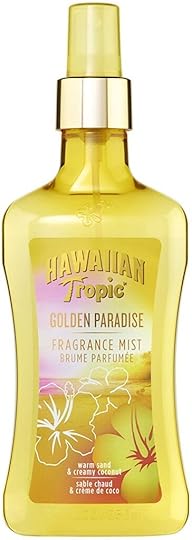 BUY
BUY
Hawaiian Tropic Golden Paradise Fragrance Mist: from glistening sand to warm sultry skin, the irresistible signature scent of Hawaiian tropic exudes a beachy glow from head to toe. BUY FROM AMAZON
 BUY
BUY
Hawaiian Tropic Beach Dreams Fragrance Mist: Discover the scent of sparkling unexplored tropical islands with aquatic florals and exotic with Hawaiian Tropic beach Dreams fragrance body mist. BUY FROM AMAZON
 After all, the perfume you wear says so much about you and your personality...
After all, the perfume you wear says so much about you and your personality... Share the Love with a Repost Tweet and Pin!
Share the Love with a Repost Tweet and Pin!The post 25 Affordable Perfumes That Smell Like The Beach appeared first on The Backpacking Housewife.
November 16, 2020
Do You Have ‘Wandermust’?
If, like me, you’ve never ever thought that a two-week holiday was long enough and the concept of travel means even more to you now than it did before lockdown, and you are more than ready to travel again in order to reinvigorate your outlook on life, then I believe your wanderlust might have just shifted up a gear into wandermust!
Looking back to the time before I was The Backpacking Housewife, and just a normal housewife, I realise that I’d always prioritised travel over many other material aspects of our life as a family.
Luckily, my husband felt the same way, and together we both worked hard to pay the bills and to bring up our three children and we both thought it was really important to take them on a two-week holiday once a year in the summertime.

Saving up for that special family annual two-week holiday always started the next day after we returned from the previous holiday. When our boys were small (for context they are now aged 31, 29, and 27) we took advantage of booking early-bird package deals to get special kids prices. Holidays to Florida were always good value back then (for several years kids under 12 years old travelled for £99 with a fare paying adult). For several years, we flew into Sanford or Orlando, for a week spent having fun on I-Drive, before heading over to The Space Coast or across to Tampa, Sarasota, Clearwater Beach, St Petes’ Beach, and all those other gorgeous spots on the sunny Gulf Coast. I have glorious memories of endless roller-coasters, sunshine, and beaches and crab-shacks.
I do remember how on holidays to the USA and particularly Florida, we never took the ‘free car’ included in the package because we thought the insurance was too expensive. Taking the public bus rather than paying extra per person for the tourist transit coach out of the airport also saved money. Money that we could then spend on park tickets.
In the USA our pre-teen kids ate free at the all-you-could-eat diners.
Back then the UK Pound was strong against the US Dollar. Granted, it got a lot more costly when they got to be teenagers, so we had to get even more savvy then and find other travel hacks to exploit!

The Horton Family on Holiday
One year, in Orlando, we took advantage of a credit card deal to pay for our park passes, which meant we’d buy two and get one free. We bought annual passes for a water park on I-Drive because it was the same price as a few visits, which meant that when we headed to Orlando two-weeks earlier the next year, we could use them again. We also took holidays in other long-haul destinations and we’d most often book these independently. So, by the time our boys went off to university, it’s safe to say, they were very well-travelled and travel savvy.
Please understand, it’s not that we were never particularly wealthy – we simply prioritised money for travel – over spending on other things.
For example: it took us ten years to renovate our home when I’m sure anyone else might have done it in six months. I remember buying a great quantity of beautiful curtain fabric in the Laura Ashley sale and having the roll stood up against the wall for about four years. Simply because the curtain makeup money went on booking flights for the family. My mum eventually stumped up the money for making those curtains out of sheer frustration with me and told me it was my Christmas and birthday present for the next several years.
I will admit, many of our friends and family didn’t ‘get’ our compulsion to travel or our feelings of ‘wandermust’ for travel.
So, seven years ago, finding ourselves with an empty nest, it wasn’t really a surprise to us or to our boys when we decided we’d sell our home, our business, our cars, and all our belongings in exchange for a pot of capital and two backpacks. And, we still have to travel economically (and in economy) and to a tight budget, so that we can sustain travel for longer. It has all worked out well for us so far. We’ve travelled around the whole world twice, had amazing experiences and met so many lovely people, and explored 56 countries.

Well… that was until 2020 came along.
So, in having to return to our homeland in 2020 and quickly find somewhere to live, do we now have regrets? No. Absolutely none.
Do we still have our inherent wandermust? Oh, absolutely, yes. In fact, taking travel away from us has only heightened our longing to explore and to have adventures abroad.
One of my favourite travel quotes has always been ‘we travel not to escape life, but for life not to escape us…’ because that’s exactly how I feel about it.

The big news is that more people now feel the same way!
I saw that Elle Magazine has been looking into travel trends in the New Future:
“Expect to see a heightened thirst for travel in 2021, with people wanting to do, see, and experience more. We’re starting to get itchy feet and think of all of the possibilities that might be afforded to us if we can embrace travel once again if the pandemic’s threat reduces.”
Their report also tells us that almost all of us have been spending much of our free time recently looking for travel inspiration with over a third of us looking at potential destinations as often as once a week! So, you might have noticed, while gazing wistfully at photos of palm tree and pools and beaches online and in magazines, that travel industry agents and the travel-watching media – while taking into account current travel safety advice – are all hot on the topic of advising us on the best places to travel in 2021. It’s encouraging and it’s exciting but what exactly does all this mean?
What is the NEW FUTURE going to look like?
And, how does it fit in with our dreams of tropical beaches and sun-drenched places and our plans to spend our future winters in warmer climes? I personally believe that it means a seismic shift is about to happen in travel.
Why? Because travel planning is trending right now and across ALL age groups!

The travel industry is buzzing with words for in the New Future.
MINDFUL and SUSTAINABLE and SLOW travel will create our NEW NORMALAnd that’s why, here at The Backpacking Housewife Dotcom, I’m looking into the crystal ball of travel trends and hoping to inspire you to adopt this new movement while you initiate your own New Future travel itinerary of travel and adventures.
Forbes Magazine predicts many wanting to make up for ‘lost time’ and travel as soon as it is safe to do so.
But who these days has the time to take mindful, sustainable, slow travel trips?
The Under 45’s often have school age children and family commitments that don’t blend so well with taking extended trips abroad. But the booking platform Get Your Guide says the under 45’s intend to take more holidays in future. They’re planning to use their travel vouchers to rebook trips in 2021 and to make up for any missed celebrations they were forced to cancel during the Corona Virus pandemic. Short haul and/or domestic holidays with green credentials will be popular with this age group.
Over 45’s: are eager to resume traveling too with annual work leave being ‘rolled over’. The travel companies are reporting how more people in this age group than ever before are booking holidays for longer than the usual two weeks. The over 45’s are now considering the merits of being ‘location independent’ and working as ‘digital nomads’ with a huge rise in those planning a ‘workcation’ which involves relocating for weeks or even months at a time in order to work remotely while living abroad.
Over 50’s: According to a survey by Prudential via Wise Living Magazine – the majority of over 50’s now have bucket lists. Adventure holidays, luxury holidays, cycling and walking, solo travel, and escorted tours, are all very popular with this age group. So, unsurprisingly, travel agents are reporting a steep rise in those planning ‘bucket list’ trips.
Travel ranks top for the over 50’s who have a bucket list.

The Cambridge English Dictionary describes the bucket list as a list of the things that a person would like to do or achieve before they die. And, according to Age Partnership research:
“53 percent over over 50’s cite travel as their number one aspiration, and seeing the Northern Lights is the most popular, followed by bucket list holiday ideas such as driving Route 66 in the US. One adventurous soon‑to‑be‑retiree has set his sights on Base Camp at Mount Everest”.
Over 55’s: Older travellers are even more eager to get back to travel. Many are looking into or considering taking early retirement or planning for their retirement. 90 percent of over 55s have written a bucket list too. It’s this age group who suddenly finding themselves with an empty nest, who may now have the freedom and resources to travel more often and for much longer.
This is why slow travel is booming amongst the baby boomers.A ‘baby boomer’ or ‘boomer’ is a person born during a baby boom between 1945 and 1965.

The concept of slow travels means taking longer trips and staying in your chosen location for longer and “soaking in your environment rather than rushing through it” according to ABTA who are the leading trade association for travel agents and tour operators. Their survey indicates that slow travel “will top the pile for travel trends in the future”.
Is slow travel therefore kinder to the environment?Researchers agree that the further you travel then the longer you should stay in a place if you considering the C02 emissions released by the plane that you flew in to get there. Skyscanner goes further by stating that “many airlines are opting to fly their newer aircraft, which are often more fuel efficient. Want the most eco-friendly flight? Simply look for the ‘Greener Choice’ option whenever you search”.
Local sustainable travel means being mindful of local culture and respectful of the local history and people and the environment. Taking your rubbish away with you. Spending money locally to support local people and small business. Using Get Your Guide to find reliable local guides.
Those Over 65 are typically now looking to spend their retirement and their resources on travel and new experiences according to the article entitled ‘Travels New Normal’ by Get Your Guide.
“The over 65’s are even more eager to get back to travel than typically wanderlust driven millennials and where they go and what activities they’ll choose and what types of vacations they envision are quite different from just 6 months ago”.

It seems the NEW FUTURE of TRAVEL fits well with ‘wandermusters’ in all age groups. And, the good news is that middle-aged/older travellers are being seen as the keenest of all to throw off the shackles of a more sedentary lifestyle in favour of travel, adventure, and new experiences!
As I’m middle aged myself, I’m certainly an example of that trend, and I want you to know it is absolutely possible to travel more and to enrich your later life with travel experiences and to live the life of your dreams.
I can show you how we did it – and how you might do it too – if that’s your goal.
But, of course, your situation might be very different to ours. You might not want or need to sell everything you own like we did. You might just downscale in order to travel more often in later life. If you haven’t quite reached that stage yet, then you might just want to arrange a six-month sabbatical from work to travel. You might want to travel as a couple or you might be travelling solo.
Perhaps you’re trying to work out how you can travel and work remotely as a digital nomad?
You might take early retirement or have reached retirement age and want to tick off your bucket list.
You might rent out your home in order to fund your travels and return to it later.
You might get house sitters in to look after your home and pets while you travel for a while.
Your idea of travel might involve shiny suitcases rather than backpacks – and that’s perfectly okay too!
Because there are lots and lots of ways to travel and I’m going to explore them all with you through this website and together we can talk about the pros and the cons, the good and the bad, your concerns and your expectations.
That’s if – like me – you never ever did think that a two-week holiday/vacation was long enough!
Let me know if you have a bucket list and if your wanderlust has shifted up a gear into wandermust. Do subscribe to my mailing list via the pop up for travel update news or join my subscription list via the side bar – to receive my new posts via email.
Leave a comment – I’d love to hear from you!
#mc_embed_signup{background:#fff; clear:left; font:14px Helvetica,Arial,sans-serif; width:100%;}
/* Add your own Mailchimp form style overrides in your site stylesheet or in this style block.
We recommend moving this block and the preceding CSS link to the HEAD of your HTML file. */
#mc-embedded-subscribe-form input[type=checkbox]{display: inline; width: auto;margin-right: 10px;}
#mergeRow-gdpr {margin-top: 20px;}
#mergeRow-gdpr fieldset label {font-weight: normal;}
#mc-embedded-subscribe-form .mc_fieldset{border:none;min-height: 0px;padding-bottom:0px;}
Subscribe
The post Do You Have ‘Wandermust’? appeared first on The Backpacking Housewife.
November 8, 2020
10 Things To Do In Scotland To Make You Feel Scottish

As an incomer to Scotland, it’s useful to know a few things to do in Scotland to make you ‘feel Scottish’. I know this because I was once an ‘incomer’ myself, when I moved over the border to Scotland from England, over thirty years ago.
I also know from Scottish experience that however welcome you are made to feel by the inherently warm and friendly Scottish folk, it still takes at least ten years of living in Scotland not to be considered an incomer anymore. No offence is meant. It’s simply a matter of commitment. My children, being born and bred here in Scotland are truly Scottish, with the accent and everything.
Unfortunately, no matter how hard I’ve tried – using all the Scottish slang and everything – I still speak Scottish with an English accent. Incidentally, I’m told by my French friends that the same is true of my French language skills. I still sound inherently English.
Right now, the backpacking husband and I are back in Scotland, after selling our Scottish home and everything we owned seven years ago to go off travelling and have adventures abroad. Scotland is still our homeland – not through birth – but certainly by choice. Wherever we may wander, our hearts will always belong to Scotland, and it’s true that you don’t always have to live in Scotland to belong to Scotland.

We are currently renting a house near to where we once lived. Two of our three sons still live in Scotland. Our eldest lives in Edinburgh and the youngest in Glasgow. The middle one, having graduated his Scottish university, went off to teach English abroad seven years ago and didn’t come back. He is now a Proud Scot living in South Korea, where he has his own family.
So, now that the backpacking husband and I are living back in Scotland, I feel qualified to tell you all about the things you can do in Scotland as an incomer to feel Scottish and to behave like a local whether you are just visiting Scotland or you are relocating here and planning to make Scotland your new home.

Your Scottish home is your castle…
1. Be Friendly: The very first thing that impressed me when we first moved to Scotland was the genuine friendliness of the people. Everyone speaks freely to everyone else and that’s whether they know each other or not. It’s lovely rather than invasive. Although, I was terribly embarrassed at not being able to fully understand the English/Scottish dialect at first. So, when you are out and about in Scotland, whether hiking hills or walking on the street – do say a cheery ‘hellooo’ with a passing comment on the weather that day – it’s always an icebreaker – as Scots love to talk about the weather.

As it’s usually grey and raining in Scotland, a remark about the day being ‘dreich’ (dreary) and ‘dour’ (dark) or ‘bonny’ if the sun happens to be shining, always evokes an enthusiastic response.
2. Talk like a local using Scottish slang: A sandwich is called ‘a piece’. Children are ‘weans’. An affectionate term for a woman is to call her ‘a hen’. If someone says ‘ken’ then they didn’t get your name wrong as it’s the same as saying ‘Yes, I know’. If something is ‘mingin’ then its disgusting. If something is good then it’s ‘braw’ but ‘pure dead brilliant’ is very good indeed. ’ A ‘bampot’ is an ‘eejit’ and an ‘eejit’ is an idiot. ‘Steaming’ is being very drunk. A hat is always ‘a bonnet’. ‘Auld Reekie’ is an affectionate term for Edinburgh. If somewhere is ‘hoachin’ then it’s very busy.

If you are ‘scunnert’ then you are fed up, finished, or beat.
3. Food & Drink: Scotland is often touted as the land of ‘fried food’ with deep fried pizza and fried chocolate bars on the menu – and it’s true – but its also true that there are many Scottish food that will intrigue and delight you rather than escalate your cholesterol levels. Scottish seafood is world class. Clams, mussels, lobster, oysters, loch fresh salmon, smoked salmon.

For meat lovers, free-range grass-fed Scottish beef and lamb is also considered world class quality produce. My personal recommendations for fine Scottish produce would also include haggis, scotch pie, clootie dumpling, Tunnock’s teacakes, Irn-Bru, Scottish whisky (if it’s spelled as ‘whiskey’ then it’s Irish or American) and a cup of tea using tea specially blended for the soft waters of Scotland.
Having travelled all over the world, I now really appreciate Scottish water served straight from the tap – as it tastes of nothing but cool freshness – and that’s truly wonderful.
4. Holidays: Burns Night. In Scotland, Burn’s Night is celebrated with a ‘Burns Supper’ on the 25th January, to honour the birthday and the life and poetry of Scotland’s Bard: Robert ‘Rabbie’ Burns. The supper is always a menu of haggis, tatties, and neeps. Haggis being a blend of meat and oats and spices. Tattie being potatoes and neeps being turnips. A Burns Supper is something of a ceremony.
People dress for the occasion. Men in highland garb and ladies with a sash of tartan. The haggis, on a silver platter, will be piped into the room by a piper on the bagpipes as everyone is standing. A speaker will ‘address the haggis’ in dramatic prose with a poem of Rabbie Burns and then stab it with his Sgian-dubh (knife).

There will be toasts with whisky. Lots and lots of whisky. There will be speeches and jokes and music and dancing, with traditional ceilidh dancing. I have attended many a Burns Supper and they were all wonderful!
I would recommend you read a few Burns’ poems to get up to speed on your Burns!
5. Holidays: Hogmanay. Another important holiday in Scotland is Hogmanay. In other parts of the world the holiday is called ‘New Year’ but in Scotland ‘Hogmanay’ means the last day of the year and the festivities originate in the winter solstice and it is a big annual celebration. Edinburgh, Scotland’s capital city, famously holds the world’s biggest Hogmanay party on Princes Street beneath the castle over which the greatest firework display is lit at the stroke of midnight on the last day of the year. Also famously, it’s Rabbie Burns’s poem, ‘Auld Langs Syne’ that is sang in the streets.

To feel truly Scottish you need to learn all the words of Auld Lang Syne!
Should auld acquaintance be forgot
And never brought to mind?
Should auld acquaintance be forgot
And days of auld lang syne?
For auld lang syne, my dear
For auld lang syne
We’ll tak a cup o’ kindness yet
For days of auld lang syne!
6. Fringe and festival. Eight months after the biggest New Year’s Eve party in the world, Edinburgh hosts the biggest arts festival in the world. During August, in Edinburgh, there is the Fringe and the Festival including the Royal Military Tattoo held at the castle. Edinburgh is crazy and busy during this time and the atmosphere is incredible. There are street performers and buskers and entertainers everywhere from the world’s best known to the as-yet unknown. Comedy, music, drama, and everything in between is on offer in Edinburgh during this time. Check out the official Fringe and Festival app to book back to back shows while on the move and so you don’t miss out on the two for one ticket opportunities.
Festival like a local by wearing comfy wearing shoes, always take a raincoat, and be spontaneous.
7. Go to the pub. In Scotland, a lot of socialising happens down the pub – the public house – the place with a bar and a cosy and comfortable nook with tables and chairs and a real fire. There is no better place to meet up with friends and partake of a ‘heavy’ (a pint of beer) or a wee dram (a measure of whisky). In Scotland, the weather is often dreich and dour, and so the pub is a place of warmth and solace. You might find a local band playing. There could be someone on the fiddle or the pipes. Or, a wee lassie singing a mellow Celtic song or even a full-blown ceilidh going on.
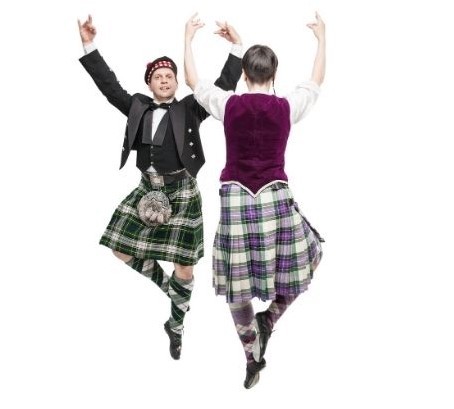
Go to the pub… it’s the spirit of Scotland.
8. Appreciate the History. Everyone in Scotland appreciates the past and celebrates their proud history. Whether it’s in recognition of Robert the Bruce, William Wallace, or Nicola Sturgeon’s efforts for Scottish Independence, or the hundreds of ancient castles and battlegrounds that remain here, Scotland is a place of living history.
To feel truly Scottish you should familiarise yourself with all of this and a very good start would be to read my posts on Edinburgh Castle – as many have never seen it before – and check out my own select list of favourite Scottish Castles in Dumfries and Galloway.
To feel truly Scottish look up your family tartan – everyone has one – even if you’re not Scottish.

9. The Great Outdoors. When the Scots are not having fun in the pub or kicking up their tartan heels in Edinburgh or nursing epic hangovers from their national holidays then they are outdoors – fully dressed for the occasion – walking The Southern Upland Way or exploring the fantastic Scottish scenery and Munro Bagging. There really is nowhere in the world (in my opinion) like Scotland for misty moorlands and scenic lochs and majestic mountains.
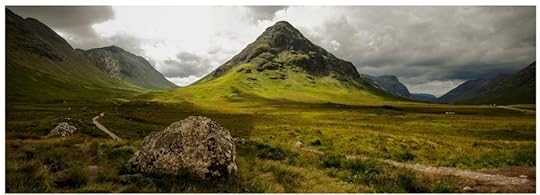
A Munro is a list of Scottish mountains all named after Sir Hugh Munro, who surveyed and catalogued them all in 1891. Munros are classed as mountains over 3,000 feet (914.4m) and there are 282 of them in Scotland. The highest Munro is Ben Nevis at 4,411 feet (1,345 m). The most challenging are the 12 airy peaks of the Black Cuillin on Skye and the narrowest ridge walk at the Aonach Eagach in Glen Coe.
Munro Bagging is An Actual Thing and it’s nothing to do with Haggis Hunting which is Also A Thing.
10. SHOPPING. The final way to feel truly Scottish is to shop for warm woollen clothes and tartan themed outfits in Glasgow’s Buchanan Street or Edinburgh’s Princes Street. From high street store to Harvey Nicks and designer names names names – it’s all there and more. My top tip for feeling properly and stylishly Scottish is to shop in Morningside as that’s where all the best pre-worn- pre-loved – second-hand – charity-shop finds are to be found.
For example: I have a gorgeous soft and comfortable cashmere sweater from a Morningside charity shop that cost £10. It’s my favourite and most precious possession. It’s accompanied me all around the world and I love it and… actually… well, I’m wearing it right now.
Scottish city people love shopping and are both well dressed and stylish.

I hope these tips on how to feel more Scottish have been helpful to you.
Have you ever visited Scotland?
Do you live in Scotland?
Do you want to move to Scotland?
Leave a comment and haste ye back!’

The post 10 Things To Do In Scotland To Make You Feel Scottish appeared first on The Backpacking Housewife.
November 5, 2020
Travel and Sleep: How to get a pukka night’s sleep while travelling
Travel and Sleep: How to get a good night’s sleep while travelling
Just recently, the people at Pukka Herbal Teas got in touch and asked if I’d like to be their ‘Sleepy Ambassador’. Well, of course, I said yes. And not just because they promised to send me lots of their delicious organic teas to try but because tea and me and sleep are a triple match made in heaven.
I absolutely love tea and I love sleep. But I will admit that getting a pukka nights sleep while travelling is not always easy and that’s why, wherever I am in the world, I stick to a bedtime routine.
I can hardly believe it but it’s been seven years (a quick calculation tells me that’s around 2550 days/nights) since the backpacking husband and I, having found ourselves with an empty-nest, sold our home and cars and all our possessions in order to travel the world long term.
That means I have literally slept in thousands of unfamiliar beds over that time.
Except, of course, during night time flights, of which there have been many: probably because I’ve always travelled in economy, and even on long-haul flights, I find sleeping while sitting upright impossible. I have to admit that I have never once ever slept on a flight. Ditto trains or buses or cars.
Although, once I get to where I’m going, well that’s a whole different story.
Once I’m checked into wherever I’m staying then I’m very good at sleeping!

Over the past seven years of travel and time-zones and jet-lag, we have often spent just one night somewhere before moving on. On occasion, we’ll spent a few nights somewhere or even extend that to a week or two. Usually, that means staying at a budget hostel or a mid-priced B&B homestay or if we feel we can splash out a bit then in a hotel. In larger cities, we tend to choose a Holiday Inn or a hotel within the same IHG chain as we like to collect IHG Loyalty Points. We’ve done this from the start and have managed to accumulate a high standing with IHG. This often means that if we just book a basic budget priced room then we’ll usually get upgraded and when that happens it is a total joy – and click – I’ll take a photo of the bed!

They all look so dreamy and invitingly comfortable and luxurious, don’t they?
Well, you should know that these photos are the best of the rest and don’t represent all the nights we’ve tried to sleep on a bench at a bus station or the floor at airports or in much less luxurious places where I’ve not bothered taking a photo of the bed!

Sometimes we’ll travel slowly and then we’ll stay somewhere for a few weeks or even several months. This has been the case in Central America, the Caribbean, and in France, and now here in Scotland.
If it’s not a housesitting job (as in France) then we’ll certainly be looking to rent a small house (here in Scotland) or an apartment (Kuala Lumpur and Langkawi) or a hut on the beach (in Thailand and Malaysia and the Caribbean) and along the way we’ll hope to get lucky in scoring somewhere with a comfortable bed and decent pillows on which to rest our heads.
But we can’t always be picky and we do have to make the most of what’s available and affordable too.
So, faced with a multitude of night time scenarios in many countries and cities and places all over the world – how do I make sure to I get the sleep I desperately need and not just a few hours of restless napping? Well, for me it’s all down to establishing a sleep-inducing night time routine.
And that’s why I think Pukka Herbal Tea and I are simply made for each other!
Did you know that the UK’s bestselling organic bedtime tea is Pukka Night Time and it’s also their bestselling tea globally? Pukka Organic Night Time Tea is a dreamy, soothing blend to encourage a blissfully restful sleep.

The main ingredients in Pukka Night Time Organic: Valerian acts as a natural sedative to ease tension and anxiety Lavender flower, oatstraw flowering tops, chamomile flower and limeflower soothe, calm and ground your body and mind.
How this tea works: 1. Encourages undisturbed good quality sleep 2. Promotes a healthy sleeping pattern 3. Soothes, calms and grounds the body and mind.
I personally feel that a sleep routine is essential to prepare the mind and body for a restorative and peaceful night’s sleep but it’s not always easy and so I do have a few tips and tricks to share with you about how to get a good sleep while travelling.
But first of all you should decide what kind of sleeper you are and identify your body/mind dosha.
In Ayurvedic medicine, there are three dosha types and which type you are will affect your sleep.
You can take the Dosha Quiz HERE
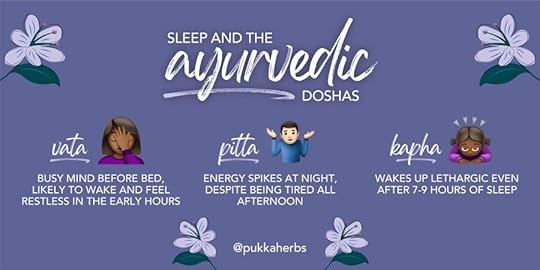
There are many other factors too that will influence the quality of someone’s sleep – comfort and noise and disturbance issues are in my experience the worst nuisances. This is why an eye mask and a set of ear plugs or noise cancelling headphones are essential kit in your backpack – just in case you find yourself in a room next to a rowdy party or above a bar playing loud music or there’s a noisy air conditioning unit or squeaky ceiling fan. The next nuisance to sleep in my experience is probably feeling too hot or too cold. To counter these aspects, travelling with a few comfort inducing accessories and a healthy routine while getting ready for bed will prepare you both mentally and physically for sleep and a good night’s rest.
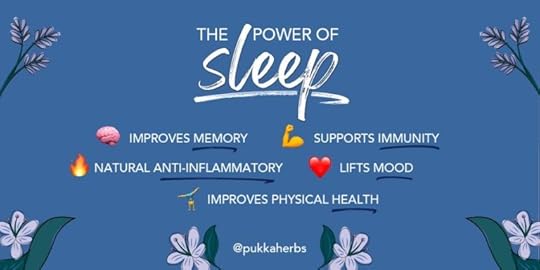
I definitely have a VATA dosha – a busy mind and a tendency to be restless in the early hours. So it’s important to me that I feel warm and relaxed and that I calm my busy mind before I sleep. I will set an alarm to wake me up so I don’t have to worry about missing an early flight or my breakfast in the morning and I make a note of anything else I might think about or worry over in the night as the act of writing it down takes it out of my head. Then I relax in a warm bath (if I have one available to me) and I will often infuse my bath with a herbal tea bag.
Pukka ‘Feel New’ with its aromatic fusion of aniseed, fennel and cardamom is amazing in a bath.
If my eyes are dry from being inside a plane and tired from jetlag, then I’ll often pop a couple of teabags on my eyes too as a relaxing and restorative compress.
Pukka ‘Love’ with rose, chamomile, and lavender would be perfect for this.
Then I sip a warm cup of herbal tea in the bed just before I put the light out.
This is a routine I stick to wherever I am in the world.
To that end, I’ll never travel anywhere without my own selection and supply of assorted herbal teabags in my backpack.

And right now, even though I’m not travelling, I’m still sticking to my night time routine and I’m really enjoying drinking Pukka Organic Night Time Tea because:
It helps me to drift off into a peaceful rest.I know it has been expertly blended with the finest quality organic herbs for a bedtime routine.It helps me to enjoy a moment to unwind before bed.It helps me to enjoy a moment to settle before bed.It helps me to enjoy a moment of calm before bed.I get to enjoy a delicious bedtime blend of chamomile and lavender and valerian.As ‘A Sleepy Ambassador’ and having now tried all the delicious teas that were sent to me by Pukka Herbs as part of their ‘Sleep With Ease’ campaign, I’m now a great fan of Pukka Herbal teas and I know they’ll absolutely be my herbal tea choice in the future. Although, I still can’t quite settle on deciding my absolute favourite daytime blend because there are so many to choose from on the Pukka Herbs Website.
Is it ‘Womankind’ with its blend of cranberry, rose, and vanilla? Or Ginseng Matcha Green with Sencha Korean green tea and Jeju Matcha power, lemongrass, ginger, liquorice, lemon and red ginseng root? Choices… choices!
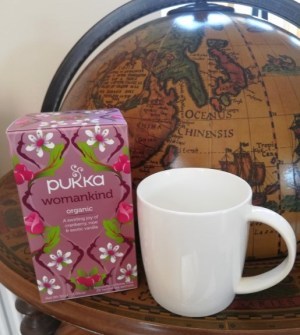
Luckily, the Day to Night Collection of Pukka Herbal Teas is a selection box of several blends and each (plastic-free) teabag is wrapped in an individual recyclable envelope package, which makes them perfect for enjoying at home – now that I’m back in Scotland – and also perfect for and stashing into my backpack when I start travelling again!
Notice: I want you to know that I received NO payment of money from Pukka Herbal in return for writing this post. I wanted to write this post about travel and sleep and tea because they are three things in life that are important to me.
I am happy to be a ‘Sleepy Ambassador’ in the Pukka ‘Sleep With Ease’ campaign in return for a sample box of Pukka Teas – including the wonderful Night Time Organic – with compliments of Pukka Herbs.
I am also happy to be associated with Pukka Herbs on this initiative because I appreciate that since 2016 Pukka Herbs have donated over £2,000,000 to environmental and social causes. They are a carbon neutral company and use sustainable packaging. They also use a respectable and sustainable fair-trade system for the harvesting of wild herbs and aromatic plants.
You can find out more information about Pukka Herbal on their WEBSITE and by using the Campaign Hashtag #PukkaNightTime on Twitter and Instagram.
The post Travel and Sleep: How to get a pukka night’s sleep while travelling appeared first on The Backpacking Housewife.
November 1, 2020
My Top 10 Castles in Dumfries and Galloway Scotland
Right now, the backpacking husband and I are renting a house in the beautiful region of Southern Scotland in Dumfries and Galloway. It’s very close to where we brought up our children and then became empty-nesters and sold everything we owned to travel the world. Finding ourselves back here again, in many ways, feels like life has come full circle.
Here we are fortunate to be surrounded by familiar green hills and glens and many historic attractions. When friends and family come to visit, they can hardly believe how many old castles are all around us here in Dumfries and Galloway, perhaps having wrongly assumed that you need to go all the way up to The Highlands of Scotland to find so many fine historic Scottish Castles and imposing Castle Ruins.
Indeed, some people drive over the border from England and straight through Dumfries and Galloway, not realising its treasures. I think that kind of makes this area like a secret location.
And, it’s not just the castles, as there are many interesting old towns and timeless villages in this area. Along the Solway Firth estuary, the third largest estuary in the UK and an area of conservation, there are expanses of rugged coastline and sandy bays and fabulous beaches at Rockcliffe, Southerness, Sandyhills and Balcary Bay.
Inland, there are deep forests and glens, rivers and lochs, and being blessed by a warmer climate than most other parts of Scotland thanks to the position of the Gulf Stream, there are also lots of large parks and botanical gardens to explore.
Did you know that Dumfries and Galloway Forest Park is home to Europe’s second International Dark Sky Park? It’s the first of its kind in the UK due to practically non-existent levels of light pollution here.
Many of these fabulous natural features and lots of other attractions and interesting places in the region will be explored by me in more detail in other posts as part of my Exploring Scotland Series.
There are indeed many castles in Dumfries and Galloway that I haven’t listed in this post. Many are not ruins at all but have been lovingly maintained or restored as grand family homes and some have been renovated into hotels where you can stay and even get married. You can read more about getting married in Scotland in my ‘Plan a Romantic Wedding in Scotland’ post HERE and if you are planning on getting married in Edinburgh Castle then you can explore it HERE.

In this post, although I had a long list of castles and castle ruins, medieval tower houses, and old forts, throughout the region to pick from and to include in this select list, I wanted to share with you my own personal favourites, and from those castles located very close to my present home in Scotland.
Aside from my neighbour, the mighty and famous Drumlanrig Castle, the castles in this post are what I would call ‘romantic ruins’ – ages-old and typically Scottish in wild settings that reek of a fabulous and often quite brutal but nonetheless fascinating history.
This is my own List of The 10 Best Castles in Dumfries and Galloway.
For the purpose of providing a visual guide and approximate locations and estimated proximities to the 10 Castles in this feature I created this map.
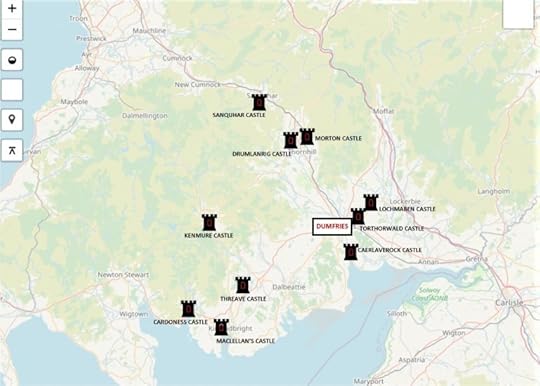
1. Drumlanrig Castle

Drumlanrig Castle is the Dumfriesshire home of the 10th Duke and Duchess of Buccleuch and Queensberry. The castle is set in a beautiful garden and within a vast (90,000 acre) country estate. It is said that the incredible views across the Nith Valley are what inspired the 1st Duke of Buccleuch to build his ancestral home in this location and on land given to him by Robert The Bruce. The Castle was built at great expense, even for a Duke, and construction took 10 years.
My own cottage home (the one I mentioned earlier in which my husband and I lived for most of our married life and where we brought up our three children) was once part of The Buccleuch Estate. We bought our cottage from the Estate as a derelict shepherd’s bothy back in the late 1980’s and we renovated and extended it into a family home.
I once had the pleasure of meeting His Grace, the present 10th Duke. Having met his father, the Late 9th Duke, several times. Back then, I was a self-employed graphic designer and I often conferred with the Late Duke on his designs for the castle’s visitors’ brochures. I even designed the label for His Grace’s own brand of Drumlanrig Scottish Whisky!
As Drumlanrig Castle was so close to our home, it’s where I would take our three boisterous boys while they were growing up, to ride their bicycles, play in the adventure playground, fish in the pond, and to explore the gardens and woodland areas, where there were so many pathways and walking routes. A favourite spot for our boys to play was in the forest on the Estate and on a narrow wooden bridge from which to throw ‘pooh sticks’ into the burn (the Scottish name for a stream).
Drumlanrig Castle is one of Scotland’s finest examples of Renaissance architecture and its treasures – with works from artists such as Thomas Gainsborough, Alan Ramsay, Sir Joshua Reynolds and Rembrandt – are impressive and reputably priceless.
Quote: Daniel Defoe on Drumlanrig in his Scottish sojourn in 1720.Interesting Notes‘A palace so glorious, gardens so fine, and everything so truly magnificent, and all in a wild, mountainous country…’
Drumlanrig Castle is built of a red sandstone and known locally as ‘The Pink Palace’.
The Castle has been the seat of The Douglas family for around 600 years.
A Douglas stronghold, it was built with the clan motto, Forward Braveheart!
The producers of Outlander used the Castle for filming their second series.
A Painting by Leonardo da Vinci known as Madonna Of The Yarnwinder (estimated to be worth £20million) was stolen during a daring robbery at the castle in 2003 by a gang posing as tourists. It was recovered in 2007 but after the 9th Duke’s death.
Check the Drumlanrig Castle Website for opening times and entrance fees:
2. Sanquhar Castle

Every day, I walk along the lane from our house on the riverbank, and I cross a bridge over the River Nith. Along this back road, I have a fine view of the ruins of Sanquhar Castle, and I often try to imagine it as it must have looked to those who lived in this part of Scotland so very long ago.
Sanquhar Castle is now a ruined 13th century castle with evidence of towers and a courtyard. But it was once an important stronghold of the powerful Crichton family.
In 1639 the castle was sold to Sir William Douglas of Drumlanrig who then went onto build Drumlanrig Castle. Both William Wallace and Robert the Bruce are said to have visited. Kings and Queens are also said to have stayed in the castle: Edward I in 1298. Mary Queen of Scots in 1568 and James VI in 1617. The castle fell vacant about 1690 and is now in the ownership of the Marquis of Bute, Lord Sanquhar.
Sanquhar Castle is easily seen (in an unfortunate and sad state given its remarkable history) and accessible from the A76 road on the southern outskirts of Sanquhar. It is also adjacent to The Southern Upland Way. But unfortunately, I can’t recommend you explore Sanquhar Castle too closely, as it’s in such a ruinous state that it could be deemed to be too dangerous.
Interesting NotesTwo ghosts reputedly haunt the castle. The ‘White Lady’ is said to be the spirit of a young woman called Marion of Dalpeddar, who is said to have disappeared in 1590. A skeleton of a girl was reportedly found during excavations in 1875-6. Another ghost is said to be that of John Wilson, who was wrongly hanged by the Crichtons, and manifests itself with groans and the rattling of chains.
The Marquess of Bute, a lover and restorer of buildings of the middle ages, undertook a period of restoration of Sanquhar Castle from 1895-1901 but he died before work was completed.
For more information: Undiscovered Scotland
3. Morton Castle
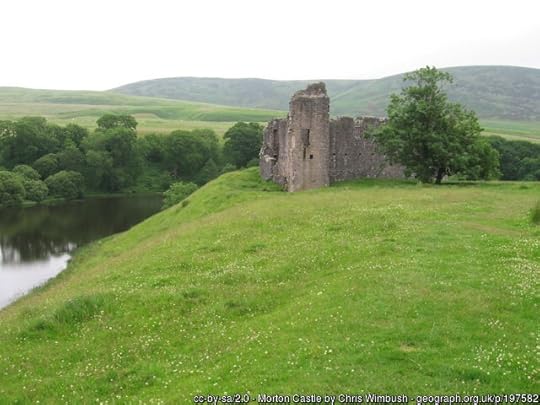
Once part of a chain of castles along the strategically important Nith Valley route, which runs from the Solway Firth north to the Clyde Valley. Like Sanquhar Castle, Morton Castle is a mid to late 13th century fortified stone hall house said to originally date from 1307. It was one of the strongholds dismantled under the terms of the 1357 Treaty of Berwick between England and Scotland (in exchange for the release of David 2nd from captivity in England) but rebuilt in the 1400’s.
It sits on high ground amongst the Lowther Hills with steep slopes down to Morton Loch. The castle is now in ruins but the remains consists of a rectangular two storey block with what would have originally been an impressive gatehouse and a circular tower with a pit prison below. In 1459, the hall was a stronghold of the Douglas’s and occupied until 1715.
Morton Castle is withing walking or cycling distance of my home here in Scotland and it’s a place I used to take my children to play and picnic in the summertime. The castle has a long history and for me it holds special memories of hot summer days when my children were young.
Historic Scotland says of Morton Castle: one of Scotland’s most enigmatic castles: a rare hall-house standing in a location as breathtaking as it is remote.
Morton Castle is located 17 miles north-west of Dumfries on the A76. Join the A702 north-east of Thornhill at Carronbridge. The road leading to the castle is unmarked and a single track so it’s a bit of an adventure to find it but don’t give up because there is no entrance fee to walk around the castle and enjoy the tranquillity and beauty of the setting and it’s well worth the investigation.
Interesting NotesRobert II bestowed his daughter, Egidia, on her betrothal to William Douglas, son of Archibald Douglas, Lord of Galloway, a dowry of the castle of Morton. Since this time, the castle and lands of Morton have been in the possession of the family of Douglas. In 1810 the Scotts, Dukes of Buccleuch (Drumlanrig castle) succeeded this and other property of the dukes of Queensberry.
Morton Castle was used as a location in the 1978 version of The Thirty-Nine Steps with Robert Powell.
Morton castle is often cited as one of the best kept secrets in Scotland, due to its locations and a distinct lack of signposts.
For More Information: Historic Environment Scotland
4. Caerlaverock Castle

Caerlaverock Castle offers the visitor more than just a ruin to explore. There is a coffee shop and exhibits and a visitor’s center and also a castle themed adventure park for children. This made my visit here when my three boys were very young a great success!
The castle’s proximity to the English border meant that Caerlaverock Castle was embroiled in the Wars of Independence almost as soon as it was built. This castle takes a little effort to get to as Caerlaverock lies just off the B725 some seven miles south of Dumfries, close to where the River Nith flows into the Solway Firth.
The story of Caerlaverock Castle begins with the granting of lands in the area to Sir John De Maccuswell (or Maxwell) in 1220.
What we now know as Caerlaverock Castle was completed in the 1270’s and was occupied by Herbert Maxwell, son of Sir Aymer and nephew of Sir John. Between 1299 and 1634 the castle was besieged many times and changed hands between the Scottish and the English through sporadic and blood battles.
In 1640, Caerlaverock was held by the Maxwell’s for King Charles I against a besieging army of Covenanters.
To explain: Covenanters were those people in Scotland who signed the National Covenant in 1638. They signed this Covenant to confirm their opposition to the interference by the Stuart kings in the affairs of the Presbyterian Church of Scotland.
Damage to Caerlaverock Castle caused by the Covenanters during and after the siege was never repaired. What you can see today is pretty much what was left in the Summer of 1640. Lord Robert Maxwell fled the country and spent the rest of his life in exile on the Isle of Man, dying there in 1646.
Caerlaverock Castle is a fine example of a moated triangular twin towered medieval stronghold. It was placed into State care in 1946. It is now looked after by Historic Environment Scotland.
Interesting NotesYou can also find the foundations of another, earlier, castle visible at the end of a nature trail through the woods to the south.
The Maxwell Clan also owned Threave Castle.
Caerlaverock castle is often used as a film location.
For More Information: Historic Enviroment Scotland
5. Threave Castle
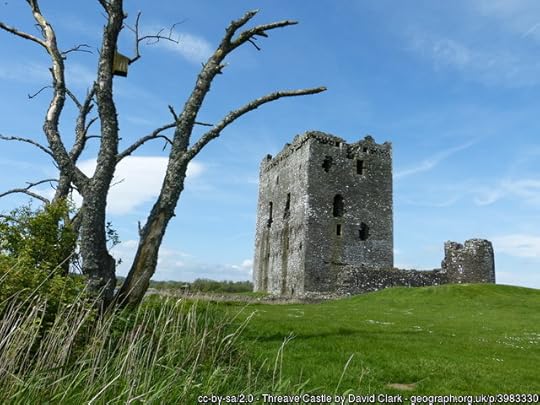
A short drive from Dumfries on the A75, Threave Castle with its gardens and nature reserve is well signposted and makes for a great day out in the summer. The castle is a formidable sight. Built by Archibald ‘the Grim’ in 1369 – so named because his face was so ferocious-looking in battle – as a stronghold for the Black Douglases. Archibald died at Threave in 1400.
The massive tower house is a mostly intact fortress standing 30 meters tall. It has been attacked many times over hundreds of years and has changed hands surprisingly often considering its formidable marshy surroundings and fortified island location.
In 1455, the castle was besieged by King James II for two months and fell after the king bribed the garrison to surrender. Caerlaverock Castle was finally abandoned in 1640.
The castle, on its island, is accessed by a half a mile or so walk to the ferry point along good farmland paths. At the small jetty, pull on the rope at the brass bell loudly and the boatman will come across from the island to take you to the castle on a short and rather romantic boat ride over the River Dee.
Interesting NotesA silver penny minted in 1300 was found during excavations on the island in the 1970s,
Hundreds of years ago, Threave island was much smaller than today, as the water level was higher.
Threave Castle is that it was used as a prison for French prisoners during the Napoleonic Wars.
Unexplained ghostly breathing noises have been heard in Threave Castle!
For more information: to check opening/closing times: entrance fees:
6. Kenmure Castle

Kenmure Castle is a spooky and atmospheric ruined 16th century fortified mansion house or castle. It sits one mile south of the town of New Galloway in south-west Scotland and to the north of Loch Ken. Kenmure has been suggested as a possible birthplace in 1249 of John Balliol who went onto became King of Scotland. It later belonged to the Douglas and Maxwell families.
Kenmure Castle became a property of the Gordon family from 1297 and a heraldic panel bearing their arms surmounts the south door. The core of the present building was largely erected in the 17th century but by 1790 Kenmure Castle was described as a ruin.
Interesting Notes
Robert Burns (1759-1796) visited Kenmure Castle and it was here that Burns was inspired to write his song, ‘Scots Wha Hae’.
A sundial bearing the date 1623 from Kenmure is now in Dumfries Museum.
There are stories of a tunnel leading away from the castle
The castle is said to be haunted by a headless piper, “The Headless Piper of Kenmure”.
For more information: The Castles of Scotland Website
7. Cardoness Castle

The lands of Cardoness are situated south-west of what is now Gatehouse of Fleet, near Castle Douglas, were in the hands of the notoriously lawless McCulloch family in 1466. The McCulloch lairds built the present Cardoness Castle in the late 15th century. In the late 17th century, financial mismanagement following the execution of Sir Godfrey McCulloch for the murder of a Clan Gordon neighbour led to their loss of the castle to a family enemy.
The castle is a fine example of a six story Scottish tower-house castle. It has basement chambers and there are several floors connected by a spiral staircase. The floors have all gone but you can still see the grand fireplaces and where the rooms would have been.
There are superb views over the beautiful Fleet Bay to the Solway Firth beyond. The castle is at the top of a small steep hill. Today it is reached up a steep concrete path with 33 steps and a steep ramp from the courtyard to the castle entrance.
Interesting NotesLegend tells the story of the McCullochs celebrating the arrival of a long-awaited male heir (after nine daughters) by holding a party on a frozen pond. The ice broke and all the McCulloch family perished except for one daughter who was ill in bed.
The pit prison at Cardoness is where the McCulloch’s kept any unwelcome visitors and is one of the best surviving in a Scottish tower house castle.
Find out more at: Historic Environment Scotland
8. Maclelland’s Castle

In 1569, the land at the south side of the River Dee, together with and the convent buildings standing in the centre of what is now Kirkcudbright town center, were acquired by Sir Thomas MacLellan of Bombie, Provost of Kirkcudbright.
Thomas MacLellan demolished the convent, leaving only the chancel to serve as the burial vault for the family. Construction of MacLellan’s Castle began around 1577.
Sir Thomas was not above bending the law to further his interests in Kirkcudbright. But he overstepped the mark in detaining a cargo ship, in Kirkcudbright harbour in 1575. Two years later he was in trouble again after being caught purchasing wine from a known pirate.
MacLellan’s Castle is laid out in an L-plan, consisting of two wings meeting at right angles. The four-storey castle has a kitchen on the ground floor and a great hall on the first floor for entertaining guests. The upper floors most likely provided accommodation. MacLellan’s Castle was always more for show than for defense.
The family sold the castle in 1752. From 1782 to 1912 it was held by the Earls of Selkirk. The castle is now under the care of Historic Environment Scotland.
Interesting NotesThere is a secret spyhole behind the great hall fireplace known as ‘the laird’s lug’ and used by the owner to eavesdrop on his guests
James VI visited in 1587 and gave Sir Thomas a silver gun. It is now in the Stewartry Museum in Kirkcudbright.
For more information: Historic Environment Scotland
9. Lochmaben Castle

Lochmaben Castle was built by Edward I in the 13th and 14th centuries and later rebuilt during the reign of James IV of Scotland. It was always an important outpost in hostile territory for the English and they made tremendous efforts to keep it in their possession throughout the 1300s. It withstood several sieges and attacks before falling to the Scots in 1385.
The castle became a royal possession in 1445. James IV initiated works and later James V was a regular visitor. The castle remained a major site in wars with the English before it was finally abandoned in the 1700s after which its stones were taken for use in local buildings. Today it’s situated among attractive woodland next to a loch.
Interesting NotesMary, Queen of Scots and Lord Darnley came to Lochmaben in October 1565
In June 1592 it was said that Francis Stewart, the 5th Earl of Bothwell, dressed as a woman to infiltrate and capture the castle.
For more information: Historic Environment Scotland
10. Torthorwald Castle

Torthorwald Castle is a large ruined rectangular tower and fortress at the centre of the village of Torthorwald just outside Dumfries. What remains today is a mere shell but still a physical witness to a rich history in the making.
The ruins stand on private farmland. However, just like Sanquhar Castle, both the castle and its tower and surrounding earthworks can still be easily viewed from adjacent public roads and on-road parking is possible with care.
There is evidence that first castle on the site was built in the 12th century and owned by Sir David de Torthorwald. In the 1400’s the castle is passed to Thomas Carlyle and the building of a substantial tower house begins.
This is the building which forms part of the current ruins seen today. The basement and first floor hall of this tower are vaulted and in one corner is a turnpike stair that leads to the upper floors. It appears that the original entrance was on the first floor.
Notably, Thomas Carlyle was married to the sister of Robert The Bruce.
In 1544, in a fierce family dispute, the castle was attacked by Carlyle in a raid against his own sister-in-law. In 1609 the castle passed by marriage to the Douglas’s. Douglas of Torthorwald had vowed to avenge the execution of his relation the Earl of Morton by The Earl of Arran (a protector and favourite to the young King James IV).
Douglas gave chase to Arran while on his travels through the hills and the King’s favourite was dragged from his horse by Douglas and stabbed to death. His head, cut from his body, was mounted on a spear and fixed to the walls of Torthorwald Castle.
In 1630 repairs to the castle are undertaken. It must have been the work of James Douglas, who did not succeed to Drumlanrig until ten years later. The last inhabitant of Torthorwald Castle is said to have been one of his younger brothers, Archibald Douglas. In 1715, the castle is abandoned.
Interesting NotesThe name Torthorwald derives from ‘hill of Thorold’
Efforts were made in the nineteenth century to stabilise the structure but the north end of the tower collapsed in 1993.
For more interesting information:
I hope you’ve enjoyed reading about my favourite castles in Dumfries and Galloway, and I’ve inspired you to ‘go left’ when heading north and over the border into Scotland and to explore the beautiful South West, where there is such a rich history and so many interesting places to explore. Have you visited any of the castles I’ve mentioned or any others in Dumfries and Galloway? Leave a comment and let me know!
For Further Information and Resources:Before you travel, please check the latest Scottish Government guidance
Wikipedia List of Castles in Dumfries and Galloway
Follow Historic Environment Scotland
Twitter: @HistEnvScot | @welovehistory
Facebook: @HistoricEnvScotland | @VisitHistoricScotland
Instagram: @HistEnvScot | @historicscotland

The post My Top 10 Castles in Dumfries and Galloway Scotland appeared first on The Backpacking Housewife.


